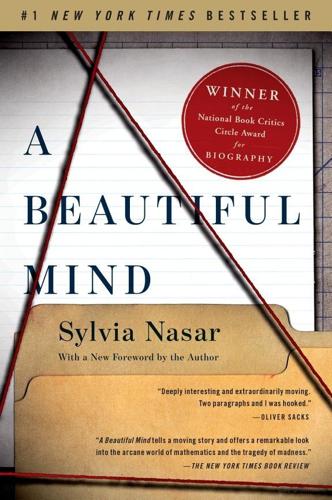
A Beautiful Mind
by
Sylvia Nasar
Published 11 Jun 1998
Just in case you think Nash was kidding himself, at a Q&A with Ron Howard at New York University’s film school, some mathematicians from the Courant Institute came up to Ron Howard to tell him that John Nash actually had looked like Russell Crowe in the white T-shirt scene. The movie turned Nash into a celebrity. I was on a flight to Mumbai where I was meeting Amartya Sen, also a Nobel laureate in economics, at a game theory conference. The woman to my left had just asked me why I was going to India when the flight attendant came by with an Indian newspaper, and there was a photograph of John Nash, the keynote speaker, on the front page, right next to one of Sen. All I had to do was to point. In Mumbai, as in Beijing and other places he was invited to speak, he was mobbed by hundreds of reporters and well-wishers.
…
Leonard, “Reading Cournot, Reading Nash: The Creation and Stabilization of the Nash Equilibrium,” The Economic Journal (May 1994), pp. 492–511; Martin Shubik, “Antoine Augustin Cournot,” in Eatwell, Milgate, and Newman, op. cit., pp. 117–28. 18. Joseph Baratta, historian, interview, 6.12.97. 19. John Nash, “Non-Cooperative Games,” Ph.D. thesis, Princeton University Press (May 1950). Nash’s thesis results were first published as “Equilibrium Points in N-Person Games,” Proceedings of the National Academy of Sciences, USA (1950), pp. 48–49, and later as “Non-Cooperative Games,” Annals of Mathematics (1951), pp. 286–95. See also “Nobel Seminar: The Work of John Nash in Game Theory,” in Les Prix Nobel 1994 (Stockholm: Norstedts Tryckeri, 1995). For a reader-friendly exposition of the Nash equilibrium, see Avinash Dixit and Susan Skeath, Games of Strategy (New York: Norton, 1997). 20.
…
E. Krieger, 1971), quoted in Sass, op. cit., pp. 13–14. 49. Sass, op. cit., p. 4. 50. Letter from John Nash to Emil Artin, written in Geneva, undated (1959). 51. Letter from John Nash to Alex Mood, 11.94. 52. R. Nash, interview, 1.7.96. 53. Confidential source. 54. See, for example, Mikhail Gromov, Partial Differential Relations (New York: Springer-Verlag, 1986); Heisuke Hironaka, “On Nash Blowing Up,” Arithmetic and Geometry II (Boston: Birkauser, 1983), pp. 103–11; P. Ordehook, Game Theory and Political Theory: An Introduction (Cambridge, U.K.: Cambridge University Press, 1986); Richard Dawkins, The Selfish Gene (Oxford: Oxford University Press, 1976); John Maynard Smith, Did Darwin Get It Right?
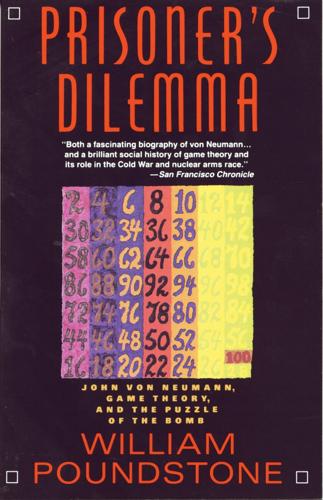
Prisoner's Dilemma: John Von Neumann, Game Theory, and the Puzzle of the Bomb
by
William Poundstone
Published 2 Jan 1993
He has explored, and attempted to popularize, voting systems that more fairly represent minority interests. John Nash became increasingly paranoid. He would pester his colleagues with peculiar ideas for tightening security at RAND. He was eventually committed to a psychiatric hospital for treatment. He recovered and joined the Institute for Advanced Study. CRITICISM OF GAME THEORY Views on game theory were changing. A decade after the publication of Theory of Games and Economic Behavior, there was a correction to the early euphoria. Game theory was deprecated, distrusted, even reviled. To many, game theory, ever intertwined with the figure of John von Neumann, appeared to encapsulate a callous cynicism about the fate of the human race.
…
Now that they don’t have it, you have to wonder if you might not have been better off going to a different dealer. In game theory you generally commit to a strategy on the basis of a single potential outcome (a maximin or Nash equilibrium). If your opponent doesn’t do as game theory advocates, you may find that you could have done better with a different strategy. One of the first experimental challenges of game theory was a set of studies done at the RAND Corporation in 1952 and 1954. The research team, which included John Nash, tried to establish or refute the applicability of von Neumann’s n-person game theory. In the RAND experiments, four to seven people sat around a table.
…
Many of the social scientists hired or consulted were economists who had fallen under the spell of game theory. It was at RAND rather than in the groves of academia that game theory was nurtured in the years after von Neumann and Morgenstern’s book. In late 1940s and early 1950s, few of the biggest names of game theory and allied fields didn’t work for RAND, either full-time or as consultants. Besides von Neumann, RAND employed Kenneth Arrow, George Dantzig, Melvin Dresher, Merrill Flood, R. Duncan Luce, John Nash, Anatol Rapoport, Lloyd Shapley, and Martin Shubik—nearly all of whom were there at the same time.
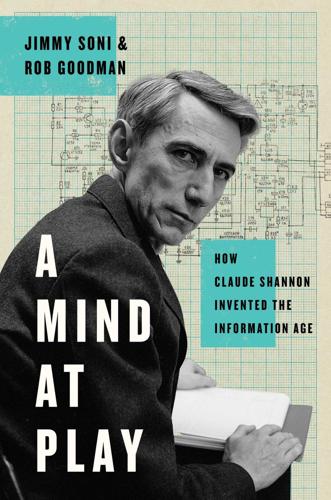
A Mind at Play: How Claude Shannon Invented the Information Age
by
Jimmy Soni
and
Rob Goodman
Published 17 Jul 2017
Charles Darwin’s geology teacher, the famed Adam Sedgwick, wrote to his student after the publication of On the Origin of Species, “I have read your book with more pain than pleasure. Parts of it I admired greatly, parts I laughed at till my sides were almost sore; other parts I read with absolute sorrow, because I think them utterly false and grievously mischievous.” Sylvia Nasar, writing about John Nash’s Nobel Prize–winning work on game theory, remarked that his ideas “seemed initially too simple to be truly interesting, too narrow to be widely applicable, and, later on, so obvious that its discovery by someone was deemed all but inevitable.” Scientific revolutions are rarely unopposed. Shannon’s work, too, was coldly received in some quarters.
…
If his patterns are more permanent than theirs, it is because they are made with ideas.” By contrast, run-of-the-mill applied mathematics was “dull,” “ugly,” “trivial,” and “elementary.” It was the pure mathematicians who looked down on Von Neumann’s work on game theory, calling it, among other things, “just the latest fad” and “déclassé.” The same scholars would level a similar judgment against John Nash—just as Doob would against Claude Shannon. * * * As America’s leading probability theorist, Doob was well positioned to review Shannon’s work. His critique appeared in the pages of Mathematical Review in 1949. After briefly summarizing the contents of Shannon’s paper, he dismissed them with a sentence that would irritate Shannon’s supporters for years: “The discussion is suggestive throughout, rather than mathematical, and it is not always clear that the author’s mathematical intentions are honorable.”
…
Further, unlike others at the IAS, we have no record of Shannon trying to elbow his way into audiences with the world’s best-known and most-sought-after scientists. Nothing in Shannon’s behavior would have indicated his interest in subjecting Einstein to a newly minted PhD’s thoughts on this or that, and so the scene simply doesn’t square with what we know of Shannon. (The more conspicuous John Nash, by contrast, insisted on meeting with Einstein even as a young student and spent an hour walking him through his thoughts on “gravity, friction, and radiation,” according to biographer Sylvia Nasar. At the end of the session, Einstein said, “You had better study some more physics, young man.”) On the other hand, a story from Claude’s friend and fellow juggling professor, Arthur Lewbel, is more plausible—and suggests that Einstein had more practical interests than the quality of Shannon’s mind: The story is that Claude was in the middle of giving a lecture to mathematicians in Princeton, when the door in the back of the room opens, and in walks Albert Einstein.
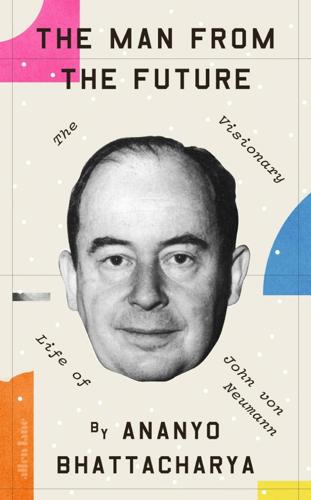
The Man From the Future: The Visionary Life of John Von Neumann
by
Ananyo Bhattacharya
Published 6 Oct 2021
Despite the generally frosty reception, ‘A Model of General Economic Equilibrium’ sparked a revolution. Mathematicians, inspired by von Neumann’s achievement, poured into economics and began applying fresh methods to the dismal science. By the 1950s, the subject was transformed. Fixed-point theorems were used to prove key results in economics – including in von Neumann’s own game theory by a young upstart called John Nash. A half-dozen Nobel laureates are reckoned to have been influenced by the work.26 Among them were Kenneth Arrow and Gérard Debreu, who were awarded the prize (in 1972 and 1983 respectively) for their work on the theory of general equilibrium, which models the workings of a free-market economy.
…
Nash spent nearly an hour trying to unwind his thoughts at Einstein’s blackboard but eventually came unstuck. ‘You had better study some more physics, young man,’ Einstein told Nash with a kind smile before sending him on his way. So the following autumn, when the unabashed Nash thought he had made a breakthrough in game theory, he quite naturally scheduled a meeting with the discipline’s founding father. A young John Nash. Just as he had with Einstein, Nash arranged to see von Neumann in his office at the IAS. In 1949, von Neumann was busy consulting for the government, the military, big business and RAND. Behind the scenes, he was campaigning for America to pursue the H-bomb while madly chasing the computing resources necessary to show it was possible.
…
Sylvia Nasar, 1998, A Beautiful Mind, Simon & Schuster, New York. 34. Ibid. 35. J. F. Nash, ‘The Bargaining Problem’, Econometrica, 28 (1950), pp. 155–62. 36. See Leonard, Reading Cournot, Reading Nash: ‘Above all, as Shubik (1991) reports, von Neumann “hated it!”, clearly finding it foreign to his whole conception of game theory.’ 37. Email from John Nash to Robert Leonard, 20 February 1993, quoted in Nasar, A Beautiful Mind. 38. See, for example, Herman Goldstine interview with Albert Tucker and Frederik Nebeker, 22 March 1985, https://web.math.princeton.edu/oral-history/c14.pdf. ‘I don’t think Johnny suffered brilliant people easily,’ says Goldstine.
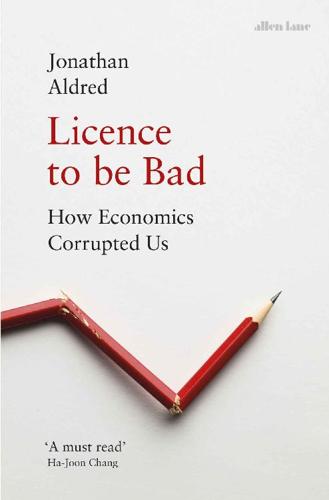
Licence to be Bad
by
Jonathan Aldred
Published 5 Jun 2019
Yet whatever von Neumann might have thought of their mathematics, these were the obvious people with sufficient mathematical skills to begin to incorporate game theory into social science. Von Neumann had alienated the academic audience likely to be most receptive to his game theory. Given von Neumann’s mathematical ambitions for social science, it was ironic that what finally propelled game theory beyond RAND and university maths departments was not maths but a story. Albert Tucker was John Nash’s PhD supervisor. In May 1950, just after persuading his wayward student not to abandon his PhD on game theory, Tucker was asked to talk about the new theory to a group of psychologists. Since his audience did not know the theory or the maths, Tucker decided to present a game he had learned about from some RAND researchers in the form of a little story.
…
So if a chess Grandmaster is playing another chess Grandmaster, then both of them might reasonably assume their opponent has a sophisticated knowledge of game theory. Such a defence of game theory is (a bit) less useless than it seems. On 5th December 1994, the day John Nash left America for Stockholm to collect his Nobel Prize, Vice-President Gore was announcing the ‘greatest auction ever’ – an auction of airwave frequency spectrum licences to be used by mobile phones. Auctions are a type of game, and this auction was carefully designed using the latest game theory. When the auction closed in March 1995, the US government was delighted: it had received more than $7 billion in bids.
…
Poor Ronald Coase – he didn’t even get to control the spelling of ‘Coasean world’, let alone what it means. 4 The Government Enemy In the early 1950s John von Neumann and John Nash were not the only geniuses associated with the RAND Corporation. RAND was the incubator for another intellectual revolution, as significant as game theory but completely independent of it. And this time the genius behind it was a lowly intern. The earliest and most enthusiastic adopters of game theory had been the military analysts at RAND, who wanted to use its powerful mathematical tools to outwit the Soviets in Cold War nuclear strategizing.
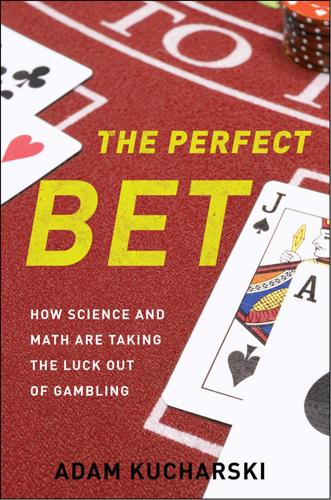
The Perfect Bet: How Science and Math Are Taking the Luck Out of Gambling
by
Adam Kucharski
Published 23 Feb 2016
Or somebody forced it to stop. Congress finally banned tobacco ads from television in January 1971. One year later, the total spent on cigarette advertising had fallen by over 25 percent. Yet tobacco revenues held steady. Thanks to the government, the equilibrium had been broken. JOHN NASH PUBLISHED HIS first papers on game theory while he was a PhD student at Princeton. He’d arrived at the university in 1948, after being awarded a scholarship on the strength of his undergraduate tutor’s reference, a two-sentence letter that read, “Mr. Nash is nineteen years old and is graduating from Carnegie Tech in June.
…
Despite his defense of Borel’s work, Fréchet didn’t think the minimax work was particularly special because mathematicians already knew about the idea, albeit in a different form. It was only when von Neumann applied the minimax concept to games that its value become apparent. As Ferguson discovered when he applied game theory to poker, sometimes an idea that seems unremarkable to scientists can prove extremely powerful when used in a different context. While the fiery debate between von Neumann and Fréchet sparked and crackled, John Nash was busy finishing his doctorate at Princeton. By establishing the Nash equilibrium, he had managed to extend von Neumann’s work, making it applicable to a wider number of situations. Whereas von Neumann had looked at zero-sum games with two players, Nash showed that optimal strategies exist even if there are multiple players and uneven payoffs.
…
In Marihuana: A Signal of Misunderstanding (report of the National Commission on Marihuana and Drug Abuse, 1972). http://www.druglibrary.org/schaffer/library/studies/nc/nc2b.htm. 136Far from hurting tobacco companies’ profits: McAdams, David. Game-Changer: Game Theory and the Art of Transforming Strategic Situations (New York: W. W. Norton, 2014), 61. 137Yet tobacco revenues held steady: Hamilton, James. “The Demand for Cigarettes: Advertising, the Health Scare, and the Cigarette Advertising Ban.” Review of Economics and Statistics 54, no. 4 (1972). 137“Mr. Nash is nineteen years old”: The letter was posted online by Princeton University after John Nash’s death in 2015. It went viral. 138Despite his prodigious academic record: Halmos, Paul. “The Legend of John von Neumann.”
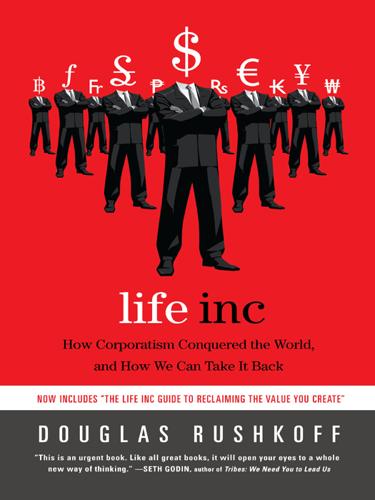
Life Inc.: How the World Became a Corporation and How to Take It Back
by
Douglas Rushkoff
Published 1 Jun 2009
They tested their ideas on Rand’s own secretaries, creating all sorts of different scenarios in which the women could cooperate with or betray one another. In every single experiment, however, instead of making choices in the self-interested way that Rand expected, the secretaries chose to cooperate. This didn’t deter John Nash, the Rand mathematician portrayed by Russell Crowe in the movie A Beautiful Mind, from continuing to develop game scenarios for the government based on presumptions of fear and self-interest. An undiagnosed paranoid schizophrenic, Nash blamed the failed experiments on the secretaries themselves.
…
Freakonomics, the runaway best seller and its follow-up New York Times Magazine column, applied this model of “rational utility-maximization” to human behaviors ranging from drug dealing to cheating among sumo wrestlers. Economics explained everything with real numbers, and the findings were bankable. Even better, the intellectual class had a new way of justifying its belief that people really do act the way they’re supposed to in one of John Nash’s game scenarios. Ironically, while the intelligentsia were using social evolution to confirm laissez-faire capitalism to one another, the politicians promoting these policies to the masses were making the same sale through creationism. Right-wing conservatives turned to fundamentalist Christians to promote the free-market ethos, in return promising lip service to hot-button Christian issues such as abortion and gay marriage.
…
If anything, it’s the other way around: a landscape defined by the competitive market will promote self-interested behavior. It’s the surest path to a corporatist society. Maybe that was the objective all along. Central Currency The economy in which we all participate is no more natural than the game scenarios John Nash set up to test the Rand Corporation’s secretaries. It is a model for human interaction, based on a set of false assumptions about human behavior. Even if we buy the proposition that people act as self-interestedly as they possibly can, we must accept the reality that people’s actual choices don’t correspond with their own financial well-being.
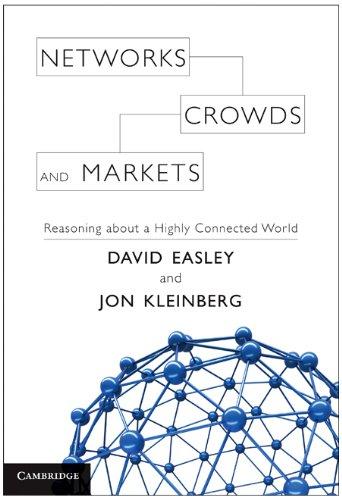
Networks, Crowds, and Markets: Reasoning About a Highly Connected World
by
David Easley
and
Jon Kleinberg
Published 15 Nov 2010
INFORMATION NETWORKS, HYPERTEXT, AND ASSOCIATIVE MEMORY389 Nash Game Equilibrium Theory John Forbes Nash RAND A Beautiful Mind (film) Apollo 13 Conspiracy Ron Howard (film) Theories NASA Figure 13.4: The cross-references among a set of articles in an encyclopedia forms another kind of information network that can be represented as a directed graph. The figure shows the cross-references among a set of Wikipedia articles on topic in game theory, and their connections to related topics including popular culture and government agencies. how it’s possible to get from the article on Nash Equilibrium to the article on NASA (the U.S. National Aeronautics and Space Administration) by passing through articles on John Nash (the creator of Nash equilibrium), A Beautiful Mind (a film about John Nash’s life), Ron Howard (the director of A Beautiful Mind), Apollo 13 (another film directed by Ron Howard), and finally on to the article about NASA (the U.S. government agency that managed the real Apollo 13 space mission).
…
On the submodularity of influence in social networks. In Proc. 39th ACM Symposium on Theory of Computing, 2007. [305] Roger Myerson. Incentive compatibility and the bargaining problem. Econometrica, 47:61–73, 1979. [306] John Nash. The bargaining problem. Econometrica, 18:155–162, 1950. [307] John Nash. Equilibrium points in n-person games. Proc. Natl. Acad. Sci. USA, 36:48–49, 1950. [308] John Nash. Non-cooperative games. Annals of Mathematics, 54:286–295, 1951. [309] National Research Council Committee on Technical and Privacy Dimensions of Information for Terrorism Prevention and Other National Goals.
…
GAMES Chapter 7 Evolutionary Game Theory In Chapter 6, we developed the basic ideas of game theory, in which individual players make decisions, and the payoff to each player depends on the decisions made by all. As we saw there, a key question in game theory is to reason about the behavior we should expect to see when players take part in a given game. The discussion in Chapter 6 was based on considering how players simultaneously reason about what the other players may do. In this chapter, on the other hand, we explore the notion of evolutionary game theory, which shows that the basic ideas of game theory can be applied even to situations in which no individual is overtly reasoning, or even making explicit decisions.
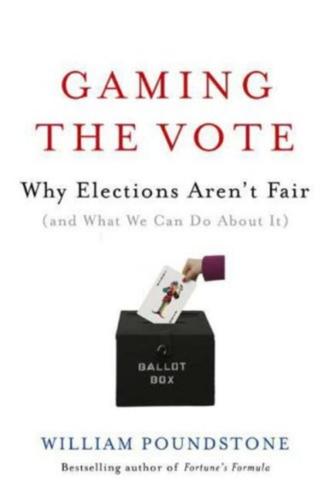
Gaming the Vote: Why Elections Aren't Fair (And What We Can Do About It)
by
William Poundstone
Published 5 Feb 2008
RAND took pride in hiring a diverse group of specialists and encouraging everyone to talk to one another. Over the years, RAND's scholars and consultants have ranged from John Nash to Condoleezza Rice. In its first decade, however, the guiding spirit of the place was unquestionably John von Neumann. "Everyone sat up in great awe" when von Neumann spoke, Arrow said. Politically, von Neumann was conservative and a hawk. He believed that game theory provided useful models for nuclear deterrence and arms races. RAND's people pondered questions such as would the Soviet Union launch a first strike against the United States if it meant losing twenty million people in the counterattack?
…
Bad Santa 201 Donald Saari • Kris Kringle • the nobody problem • rigged elections • Peter Fishburn· Samuel Merrill III • Jill Van Newenhizen • indeterminacy· rebuttals and counter-rebuttals • Unsophisticated Voter System· unmitigated evil • symmetry • polyhedra • behavioral assumptions I find to be >'ery dangerous • Mr. Mediocre· Thomas Edison· electrocuted dogs· "'President Perot" • Alexander Tabarrok • '"Buddy" Roemer· how to buy kitchen cabinets· "'wherever you go, there you are"· polls· chameleon on a mirror· bandwagon effect· Jesse Ventura· Roger B. Myerson· John Nash· self-interest· bullet voting· Terry Sanford· air bags· Burr's dilemma , Contents 13. Last Man Standing 219 Orange County· John Wayne· American machismo· the Condorcet winner· Linux • Markus Schulze· CSSD • Wikipedia • trolls· Queen Elizabeth· Kim Jongil • sarcasm· simplicity· Ka-Ping Yee· Microsoft Windows· manipulative behavior • how ro prevent carjacking· Mathematics Awareness Week • lain Mclean· permanent pointlessness 231 14.
…
Myerson and Weber ended up collaborating on a 1993 article, "A Theory of Voting Equilibria." In Weber's words, 'This is the paper that, I believe, makes the strongest theoretical case for approval voting." The publication invokes another idea with roots in the cold war, the "Nash equilibrium." As a RAND consultant, mathematician John Nash (of A Beautiful Mind fame) proposed a particular kind of solution to the "games" of nuclear deterrence or voting or anything else, A Nash equilibrium is an outcome where everyone is satisfied with his or her decision, given what everyone else did. No one has any regrets about doing what he did. In the case of voting, this means that all the voters are happy with the way they voted (though not necessarily happy with the election's outcome).
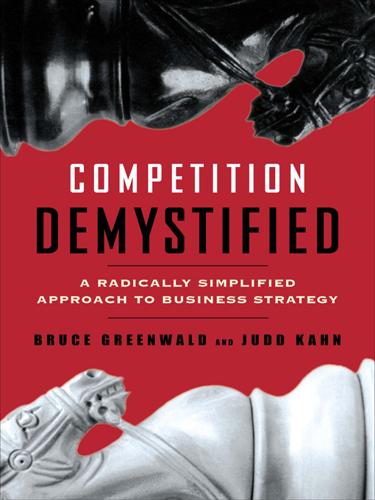
Competition Demystified
by
Bruce C. Greenwald
Published 31 Aug 2016
The two conditions work together; if no competitor has a motive to change its current course of action (stability of behavior), then no change will occur, confirming the stability of expectations. This concept of the likely outcome to a competitive situation is referred to in game theory as a “Nash equilibrium,” after its developer John Nash of A Beautiful Mind and Nobel Prize fame. In the Lowe’s–Home Depot example, imagine that the current outcome has Lowe’s at $115 per basket, Home Depot at $105 per basket (box C). If Lowe’s expects Home Depot to keep its price at $105, Lowe’s can improve its position by lowering its price to match Home Depot.
…
Clearly, a company that can do better by not cooperating is not going to continue to cooperate. In the language of formal game theory, this condition is referred to as “individual rationality.” Unless it makes sense for each firm to cooperate, meaning that each firm does at least as well by cooperating as by refusing to cooperate, then cooperation will not be sustainable. In this sense, the original division of the spoils will not be fair. Because of the fairness condition, it is important to consider the outcome that firms can achieve when they do not cooperate. In John Nash’s term, these are “threat point” outcomes, the “threat” being noncooperation and a myopic pursuit of one’s individual goals.
…
The roles that the company would play within a cooperative configuration, and the market positions it would occupy, highlight the specific competences that the company brings to the industry and thus the areas in which it should focus its efforts. Only after it has made these decisions is it time to turn to the question of what rewards it might reasonably expect to earn from these focused activities. UTILIZING “FAIRNESS” PRINCIPLES TO DIVIDE THE SPOILS WHILE SUSTAINING COOPERATION The mathematician John Nash won the Nobel Prize in Economics for, among a few other things, initiating work on the principles of “fairness” for determining the division of rewards in an industry that has achieved a stable cooperative organization (a cooperative equilibrium). Other economists have built on Nash’s efforts, so that now the principles are well established.
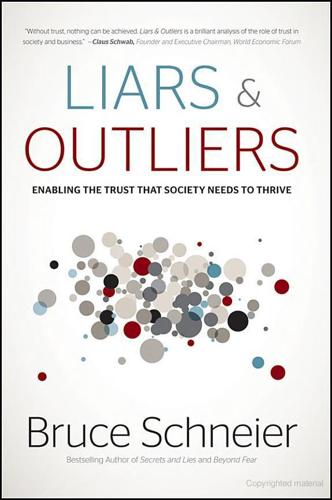
Liars and Outliers: How Security Holds Society Together
by
Bruce Schneier
Published 14 Feb 2012
Tucker (1980), “A Two-Person Dilemma,” UMAP Journal, 1:101–3. Albert W. Tucker (1983), “The Mathematics of Tucker: A Sampler,” The Two-Year College Mathematics Journal, 14:228–32. Many researchers Sylvia Nasar (2001), A Beautiful Mind: The Life of Mathematical Genius and Nobel Laureate John Nash, Simon & Schuster. John Nash (2008), “The Agencies Method for Modeling Coalitions & Cooperations in Games,” International Game Theory Review, 10:539–64. Robert Axelrod and William D. Hamilton (1981), “The Evolution of Cooperation,” Science, 211:1390–6. Robert Axelrod (1984), The Evolution of Cooperation, Basic Books. open grazing pasture Garrett Hardin (1968), “The Tragedy of the Commons,” Science, 162:1243–8.
…
How else can you explain that so many of our Facebook pages include people we would never have even considered talking to in high school, and yet we help water their imaginary plants? Chapter 5 (1) The Prisoner's Dilemma was originally framed in the 1950s by Merrill Flood and Melvin Dresher at the RAND Corporation, and was named several years later by Albert Tucker.Many researchers have informed and analyzed this game, most famously John Nash and then Robert Axelrod, who used it to help explain the evolution of cooperation. (2) I should probably explain about Alice and Bob. Cryptographers—and I started as a cryptographer—name the two actors in any security discussion Alice and Bob. To us, anyone we don't know is either Alice or Bob.
…
Spammers do better if they don't clog e-mail to the point where no one uses it anymore, and rogue banks are more profitable if they don't crash the entire economy. All parasites do better if they don't destroy whatever system they've latched themselves onto. Parasites thrive only if they don't thrive too well. There's a clever model from game theory that illustrates this: the Hawk-Dove game. It was invented by geneticists John Maynard Smith and George R. Price in 1971 to explain conflicts between animals of the same species. Like most game theory models, it's pretty simplistic. But what it illuminates about the real world is profound. The game works like this. Assume a population of individuals with differing survival strategies. Some cooperate and some defect.

Algorithms to Live By: The Computer Science of Human Decisions
by
Brian Christian
and
Tom Griffiths
Published 4 Apr 2016
What makes this equilibrium stable is that, once both players adopt this 1⁄3 - 1⁄3 - 1⁄3 strategy, there is nothing better for either to do than stick with it. (If we tried playing, say, more rock, our opponent would quickly notice and start playing more paper, which would make us play more scissors, and so forth until we both settled into the 1⁄3 - 1⁄3 - 1⁄3 equilibrium again.) In one of the seminal results in game theory, the mathematician John Nash proved in 1951 that every two-player game has at least one equilibrium. This major discovery would earn Nash the Nobel Prize in Economics in 1994 (and lead to the book and film A Beautiful Mind, about Nash’s life). Such an equilibrium is now often spoken of as the “Nash equilibrium”—the “Nash” that Dan Smith always tries to keep track of.
…
.”* Well, if the rules of the game force a bad strategy, maybe we shouldn’t try to change strategies. Maybe we should try to change the game. This brings us to a branch of game theory known as “mechanism design.” While game theory asks what behavior will emerge given a set of rules, mechanism design (sometimes called “reverse game theory”) works in the other direction, asking: what rules will give us the behavior we want to see? And if game theory’s revelations—like the fact that an equilibrium strategy might be rational for each player yet bad for everyone—have proven counterintuitive, the revelations of mechanism design are even more so.
…
offering one or two concrete proposals: Ideally, one would want to know the values that each person in the group assigns to all the options, and adopt a reasonable policy for making a decision based on those. One potential approach is to simply select the option that maximizes the product of the values assigned by everyone—which also lets anyone veto an option by assigning it a value of zero. There are arguments from economics that this is a good strategy, going all the way back to John Nash. See Nash, “The Bargaining Problem.” minimize the number of coins: Shallit, “What This Country Needs Is an 18¢ Piece.” ungainly denominations turn change-making: Lueker, “Two NP-Complete Problems in Nonnegative Integer Programming,” showed that under certain assumptions, making change with the fewest number of coins is NP-hard.
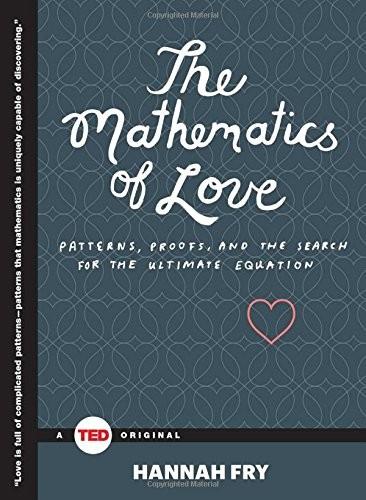
The Mathematics of Love: Patterns, Proofs, and the Search for the Ultimate Equation
by
Hannah Fry
Published 3 Feb 2015
Should you sit back and wait for them to come to you, or walk right up to the prettiest partygoer, risking a humiliating rejection? And who should you approach to give you the best chance of success? If we all go for the blonde Anybody who has seen the 2001 film A Beautiful Mind might think that maths already has the answer. The film follows the life of mathematics superstar John Nash and includes some dramatized explanations of his major mathematical breakthroughs. In one famous scene, Nash and his three charming gentlemen friends spot a group of five women in a bar: four brunettes and one particularly beautiful blonde. All of the men are immediately drawn to the blonde. But, rather than all rushing to shower her with attention, Nash argues for a different tactic.
…
And both are based on a single idea: how to exploit stereotypes to try and maximize your own reward. As we’ve already seen, the mathematics of game theory can be used to beat other suitors. And if you’re looking to turn the dating game into a dating war, it is also ideally placed to provide the best strategy in a romantic contest between two opponents. A warning: game theory encourages you to exploit the weaknesses of your opponents. When applied to dating, this view comes with a slightly cynical picture of the world. As a result, the first half of this chapter will show you some of the best tenets of game theory, not the best tenets of human morality. And because they rely on exploiting the supposed differences between men and women, they don’t really work for any non-traditional or non-heterosexual couples.
…
But before we consign ourselves to dying alone and rush out to buy a houseful of cats, it’s worth pausing and looking at these examples objectively. As neat an application of game theory as they are mathematically, they have one flawed assumption at their core: that men are trying to trick women into having sex with them and women are desperate for commitment. In reality, don’t both sexes want both? Crazily enough, I suspect there may even be some women who want sex and some men who want commitment. And thus this particular game-theory house of cards comes tumbling down. Thankfully, there are ways to use game theory that don’t require men and women to conform to stereotypes, and in particular, a formulation that can apply to many of the most common dating conundrums for every type of relationship.

I, Warbot: The Dawn of Artificially Intelligent Conflict
by
Kenneth Payne
Published 16 Jun 2021
In the real world, decisions are altogether more complex than card games, whatever Clausewitz wrote. Something else is needed—but what? THE ART OF i-WAR Libratus, the poker playing AI, isn’t a genius. The geniuses are the mathematicians who built it—John von Neumann, originator of both the computer and game theory; John Nash, discoverer of the optimum strategy for two-player games; and the Libratus team at Carnegie Mellon University, who harnessed some abstract maths to a powerful deep learning architecture. To see the difference and appreciate why it will be difficult to find a genius warbot general, we need to think about creativity in humans and machines.
…
Evidence that creative people suffer more from disorders like these is often anecdotal, or based on very small samples, and concentrates on the extreme end of the creative spectrum, especially on famous people—the brilliant artist, like Vincent van Gogh, often retrospectively diagnosed as bipolar; or the genius mathematician, like John Nash, Nobel prize winner, pioneer of game theory and paranoid schizophrenic. But some larger studies also suggest that sufferers are over-represented in creative employment. Some people with ‘non-typical’ mental processes refer to ‘neurodiversity’—the idea that not everyone is wired the same way. It’s that diversity which might be sacrificed in pursuit of a souped-up intelligence.
…
The long-lived Schelling wrote his classic works on strategy in the 1950s and 60s, an era when nuclear weapons were a new and terrifying weapon.21 And also an era when computers and quantitative thinking seemed to offer a new, more rigorous approach to thinking about all manner of social questions, including nuclear war. One exciting branch of maths was ‘game theory’, which considered the way in which rational agents interacted. Pioneered by the brilliant John von Neumann, co-inventor of the modern computer, game theory looked like a good way of modelling the sorts of adversarial behaviours that took place in international relations. It was enthusiastically embraced by a group of quantitative theorists then growing in prominence, some of whom worked for the US Air Force’s inhouse thinktank, the RAND Corporation.22 Schelling himself was a mathematically trained economist, and so was well placed to take advantage of the new technique.
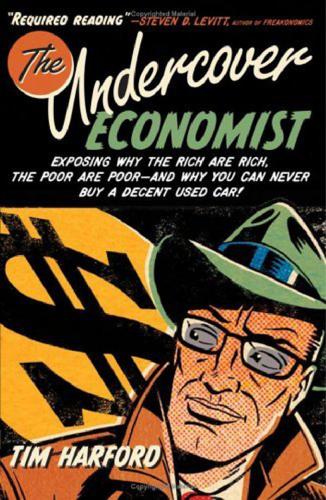
The Undercover Economist: Exposing Why the Rich Are Rich, the Poor Are Poor, and Why You Can Never Buy a Decent Used Car
by
Tim Harford
Published 15 Mar 2006
(You also receive a bad payoff if we have a head-on collision, but in game theory I don’t usually care about your payoff for its own sake. I care about your payoffs only because they help me predict your behavior.) Games are often described in just that way, using little stories or anecdotes, but these stories conceal the fact that for a game theorist, games are mathematical objects. The great game theorists are brilliant mathematicians, such as Von Neumann himself, or Nobel Prize winner John Nash, the subject of A Beautiful Mind. As in the case of all game theory, Nash’s revolutionary new way to predict a game’s outcome was an inspired application of well-understood mathematics.
…
Losses due to internet music piracy from “Rock profits and boogie woogie blues,” May 2, 2004, BBC Online News, http://news.bbc.co.uk/1/hi/business/ 3622285.stm. Data from Robert Shiller are available at his home page, http:// aida.econ.yale.edu/~shiller/. Chapter 7 See Prisoner’s Dilemma by William Poundstone (New York: Doubleday, 1992) to find out more about Von Neumann and the use of game theory in the cold war. For an analysis of poker models by Emile Borel, Von Neumann, John Nash, and Lloyd Shapley, see chapter 12 of Ken Binmore’s textbook Fun and Games (Lexington: D. C. Heath, 1992). This is the same Ken Binmore who later went on to lead the auction design team for the UK 3G auction. The United States spectrum auctions are expertly discussed in John McMillan’s “Selling Spectrum Rights,” Journal of Economic Perspectives 8, no. 3 (Summer 1994): 145–62; also McAfee and McMillan’s “Analysing the Airwaves Auction,” Journal of Economic Perspectives 10, no. 1 (Winter 1996): 159–75.
…
Many human interactions can be interpreted as battles of wits, like poker. All these interactions came to be described by theorists as “games” and explored using game theory. Economic life is no exception. Von Neumann teamed up with the economist Oskar Morgenstern to write the bible of game theory, Theory of Games and Economic Behavior, which was published just before the end of World War II. Ever since, game theory and economics have had a close relationship: game theory is taught to most students studying economics, and several game theorists have been awarded the Nobel Prize for Economic Sciences. If you want examples of real-life “economic games,” think of bargaining between landlord and tenant, between government and trade union, between used-car salesman and used-car buyer.
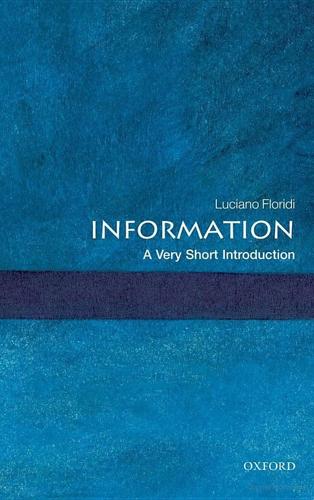
Information: A Very Short Introduction
by
Luciano Floridi
Published 25 Feb 2010
Unlike the other three outcomes, the case in which both prisoners defect can also be described as a Nash equilibrium: it is the only outcome in which each player is doing the best he can, given the available information about the other player's actions. Nash equilibria are crucial features in game theory, as they represent situations in which no player's position can be improved by selecting any other available strategy while all the other players are also playing their best option and not changing their strategies. They are named after John Nash (born 1928), who, in 1994, shared the Nobel Prize in Economics with Reinhard Selten (born 1930) and John Harsanyi (1920-2000) for their foundational work on game theory. Complete information makes simultaneous games interesting. Without such a condition, the players would be unable to predict the effects of their actions on the other players' behaviour.
…
In the rest of this chapter, we will look at some essential ways in which economic information is used. For the sake of simplicity, and following current trends, the presentation will be framed in game-theoretic terms. But instead of presenting a standard analysis of types of games first, we will focus on the concepts of information and then see how they are used. Complete information Game theory is the formal study of strategic situations and interactions (games) among agents (players, not necessarily human), who are fully rational (they always maximize their payoffs, without any concern for the other players), aware of each other, and aware that their decisions are mutually dependent and affect the resulting payoffs.
…
Generally speaking, a game is described by four elements: (a) its players, how many and who they are; (b) each player's strategies, what they may rationally decide to do given the known circumstances (a strategy is a complete plan of action specifying a feasible action for every move the player might have to make); (c) the resulting payoffs from each outcome, what they will gain by their moves; and (d) the sequence (timing or order) of the actual moves or states, if the game is sequential (see below), basically in what position the player is at a certain stage of the game. One of game theory's main goals is to identify the sort of stable situations (equilibria) in which the game players have adopted strategies that they are unlikely to change, even if, from a sort of God's eye perspective, they may not be rationally optimal. There are many kinds of game and hence forms of equilibrium.
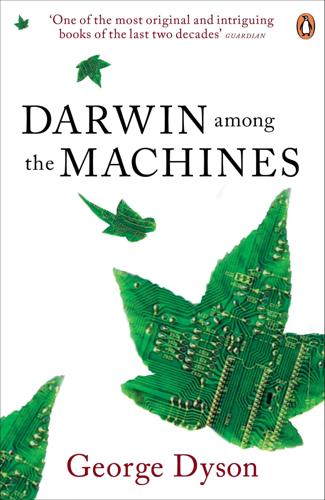
Darwin Among the Machines
by
George Dyson
Published 28 Mar 2012
A substantial section of the 625-page book is devoted to showing how seemingly intractable situations can be rendered solvable through the assumption of coalitions among the players, and how non-zero-sum games can be reduced to zero-sum games by including a fictitious, impartial player (sometimes called Nature) in the game. Game theory was applied to fields ranging from nuclear deterrence to evolutionary biology. “The initial reaction of the economists to this work was one of great reserve, but the military scientists were quick to sense its possibilities in their field,” wrote J. D. Williams in The Compleat Strategyst, a RAND Corporation best-seller that made game theory accessible through examples drawn from everyday life.6 The economists gradually followed. When John Nash was awarded a Nobel Prize for the Nash equilibrium in 1994, he became the seventh Nobel laureate in economics whose work was influenced directly by von Neumann’s ideas.
…
.: Princeton University Press, 1944); 2d ed., New York: John Wiley, 1947), 2 (page citation is to the 2d edition). 3.Loren Eiseley, Darwin’s Century (New York: Doubleday, 1958), 39. 4.André-Marie Ampère, Considérations sur la théorie mathématique du jeu (Lyons, France: Frères Perisse, 1802), 3. (Author’s translation.) 5.Jacob Marschak, “Neumann’s and Morgenstern’s New Approach to Static Economics,” Journal of Political Economy 54, no. 2 (April 1946): 114. 6.J. D. Williams, The Compleat Strategyst (Santa Monica, Calif.: RAND Corporation, 1954), 216. 7.John Nash, Parallel Control, RAND Corporation Research Memorandum RM-1361, 27 August 1954, 14. 8.John von Neumann, “A Model of General Economic Equilibrium,” Review of Economic Studies 13 (1945): 1. 9.John von Neumann, The Computer and the Brain (New Haven, Conn.: Yale University Press, 1958), 79–82. 10.John von Neumann, 1948, “General and Logical Theory of Automata,” in Lloyd A.
…
In the second, posthumous volume of Ampère’s Essay, published by his son in 1843, Ampère explains how he came to recognize a field of knowledge “which I name Cybernétique, from the word κυβερνετική, which was applied first, in a restricted sense, to the steering of a vessel, and later acquired, even among the Greeks, a meaning extending to the art of steering in general.”21 Ampère, an early advocate of the electromagnetic telegraph and mathematical pioneer of both game theory and electrodynamics, thereby anticipated the Cybernetics of Norbert Wiener, who, another century later, reinvented both Ampère’s terminology and Hobbes’s philosophy in their current, electronic form. “Although the term cybernetics does not date further back than the summer of 1947,” wrote Wiener in 1948, “we shall find it convenient to use in referring to earlier epochs of the development of the field.”22 Wiener, who was involved in the development of radar-guided anti-aircraft fire control, which marked the beginning of rudimentary perception by electronic machines, was unaware until after the publication of Cybernetics of the coincidence in choosing a name coined by the same Ampère we now honor in measuring the flow of electrons through a circuit.
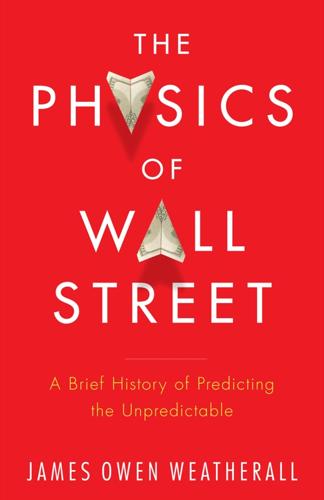
The Physics of Wall Street: A Brief History of Predicting the Unpredictable
by
James Owen Weatherall
Published 2 Jan 2013
All the while, his ideas about the physics of roulette spun around in his mind. He was sure that with the right resources — a professional roulette wheel and some computer know-how — he could strike it rich. Soon after finishing his PhD, Thorp was awarded the prestigious C.L.E. Moore instructorship in mathematics at MIT — a position held a decade earlier by John Nash, the pioneering mathematician profiled by Sylvia Nasar in her book A Beautiful Mind. Thorp and his wife, Vivian, left Southern California and moved to Cambridge, Massachusetts. They spent only two years on the East Coast before moving back west, to New Mexico. But it was enough to set their lives on a different track: it was at MIT that Thorp met Claude Shannon.
…
Morley, Henry. 1854. The Life of Girolamo Cardano, of Milan, Physician. London: Chapman and Hall. Moynihan, Daniel P. 1996. Miles to Go: A Personal History of Social Policy. Cambridge, MA: Harvard University Press. Nasar, Sylvia. 1998. A Beautiful Mind: The Life of Mathematical Genius and Nobel Laureate John Nash. New York: Touchstone. Ndiaye, Pap A. 2007. Nylon and Bombs. Baltimore, MD: Johns Hopkins University Press. Niederhoffer, Victor. 1998. The Education of a Speculator. Hoboken, NJ: John Wiley and Sons. Niederhoffer, Victor, and M.F.M. Osborne. 1966. “Market Making and Reversals on the Stock Exchange.”
…
This is just what you need to calculate your advantage, as Kelly proposed. Information flows and your money grows. As Thorp and Kimmel made their preparations for Reno, Shannon and Thorp were collaborating on Thorp’s roulette plan. When he heard Thorp’s ideas, Shannon was mesmerized, in large part because Thorp’s roulette idea combined game theory with Shannon’s real passion: machines. At the heart of the idea was a wearable computer that would perform the necessary calculations for the player. They began testing ideas for how the actual gambling would work, assuming they could make sufficient progress on the prediction algorithm. They agreed that it would take more than one person for it to go smoothly, because one person couldn’t focus sufficiently on the wheel to input the necessary data and still be prepared to bet before the ball slowed down and the croupier (roulette’s equivalent of a dealer) announced that betting was closed.
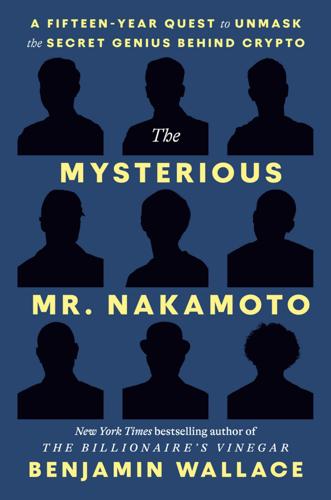
The Mysterious Mr. Nakamoto: A Fifteen-Year Quest to Unmask the Secret Genius Behind Crypto
by
Benjamin Wallace
Published 18 Mar 2025
I went back and looked at a lengthy email Nick had sent me in 2011 and saw that, like Nakamoto, he used two spaces after a period and internet slang including “BTW.” Nick was at ease with the same vocabularies and references as Nakamoto, from the work of Austrian economist Carl Menger to game-theory pioneer John Nash’s concept of equilibrium. “The design supports a tremendous variety of possible transaction types that I designed years ago,” Nakamoto had written. “Escrow transactions, bonded contracts, third party arbitration, multi-party signatures, etc.” Nick, in 1994, wrote, “I’m particularly interested in the art of writing contracts and designing transactions for online data services,” and he took a three-year detour in middle age to attend law school.
…
There were the usual suspects, most of them cypherpunks. There were more obscure names from adjacent fields like math, cryptography, and economics. Some of the people were programmers involved with the Bitcoin software project. Others were creators of newer cryptocurrencies. Many were just Famous Smart People: Bill Gates. Steve Jobs. John Nash, the mathematician portrayed in A Beautiful Mind. For each candidate, I listed arguments for and against. I was in the thick of what excited me about reporting, trying to learn something someone didn’t want you to know. “A good puzzle, it’s a fair thing,” Ernö Rubik, of Cube renown, said once. “Nobody is lying, it’s very clear, and the problem depends just on you.”
…
Robin Hanson pioneered modern prediction markets. K. Eric Drexler was the foremost proponent of nanotechnology. Hans Moravec, a roboticist, was the visionary of uploading oneself to the cloud. Bart Kosko was a leading popularizer of fuzzy logic. Eliezer Yudkowsky became the best-known AI doomer as well as a leader of the statistics-and-game-theory-fixated Rationalist movement. When Szabo learned about the extropians, he found people talking seriously, as if they were engineers discussing viable future projects, about ideas he’d previously dismissed as whimsical fictions conjured in the sci-fi stories he loved. Cryonics. Uploading. Nanotech.
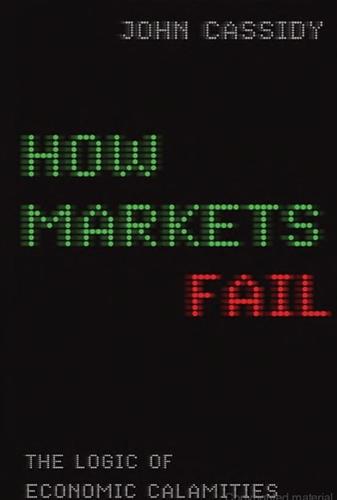
How Markets Fail: The Logic of Economic Calamities
by
John Cassidy
Published 10 Nov 2009
Unlike Wald’s work from 1934, it didn’t use any simplifying assumptions about the factors that influence demand, and unlike von Neumann’s 1937 paper, it treated both consumers and firms extensively. Mathematically sophisticated, it eschewed calculus, which was rapidly becoming old hat, and instead made extensive use of convex sets, game theory, and fixed-point theorems—borrowing an application of the last from John Nash, the Princeton mathematician and game theorist. The Arrow-Debreu paper was nobody’s idea of bedtime reading, but when their colleagues had made their way through it, they were agreed: Walras’s problem had finally been solved, and the case for competitive markets had been placed on a sound analytical foundation, or so it seemed.
…
In games of that nature, the players compete against one another, and one player’s winnings are another player’s losses. But many types of economic activity, such as international trade and investing in the stock market, involve the possibility of cooperation and mutual gains: they are positive-sum games. During the late 1940s, some progress was made in tackling this broader category of problems when John Nash, a Princeton mathematician, introduced a general method for solving non-zero-sum games, but much remained unclear. Merrill Flood and Melvin Dresher were two mathematicians working at the RAND Corporation, which the Pentagon had founded in the aftermath of World War II to engage in scientific research “for the public welfare and security of the United States of America.”
…
THE PRISONER’S DILEMMA AND RATIONAL IRRATIONALITY 143 Flood’s babysitting experiment: See William Poundstone, The Prisoner’s Dilemma: John Von Neumann, Game Theory, and the Puzzle of the Bomb (New York: Doubleday, 1992), 103. 143 Non-cooperative pair experiment: Ibid., 106–107. 145 “Both Flood and Dresher . . .”: Ibid., 122. 147 90 percent of the players choose: Ken Binmore, Game Theory: A Very Short Introduction (New York: Oxford University Press, 2007), 21. 149 “Adding together the component . . .”: Garrett Hardin, “The Tragedy of the Commons,” Science 162 (1968): 1244. 150 “Game theorists get . . .”: Binmore, Game Theory, 67. 12. HIDDEN INFORMATION AND THE MARKET FOR LEMONS 151 “I belonged to . . .”: From George Akerlof’s Nobel autobiography, available at http://nobelprize.org/nobel_prizes/economics/laureates/2001/akerlof-autobio.html. 152 “a major reason as to why . . .”: George Akerlof, “Writing ‘The Market for Lemons’: A Personal and Interpretive Essay,” available at http://nobelprize.org/nobel_prizes/economics/articles/akerlof/index.html. 153 “[M]ost cars traded . . .”: George Akerlof, “The Market for ‘Lemons’: Quality Uncertainty and the Market Mechanism,” Quarterly Journal of Economics 84 (1970): 489. 154 “was potentially an issue . . .”: Akerlof, “Writing ‘The Market for Lemons.’ ” 155 “marginally attached”: Bureau of Labor Statistics, Issues in Labor Statistics, Summary 90–04 (April 2009): 1. 156 “it is quite possible . . .”: Akerlof, “The Market for ‘Lemons,’ ” 494. 157 2006 health care spending: “National Health Spending in 2006: A Year of Change for Prescription Drugs,” Health Affairs 27, no. 1 (2008): 14. 158 “The most obvious . . .”: Kenneth J.
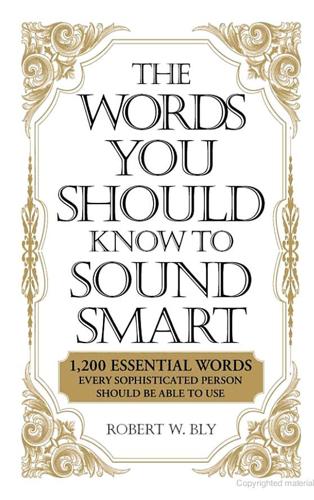
The Words You Should Know to Sound Smart: 1200 Essential Words Every Sophisticated Person Should Be Able to Use
by
Bobbi Bly
Published 18 Mar 2009
They had that weird FRISSON, an aura of magic that combined awkwardly with an earthy sense of duty.” – Ruth Morgan, American novelist fruition (froo-ISH-un), noun The completion of a task; the achievement of a goal as the result of significant and persistent effort. John Nash, a mathematician whose life was featured in “A Beautiful Mind,” received the Nobel Prize for the FRUITION of his work in game theory decades after he completed it. fulsome (FULL-sum), adjective Describes words or actions that praise or flatter someone to an excessive degree. Katie’s introduction of the keynote speaker was so FULSOME that he led his speech with a few self-effacing remarks.
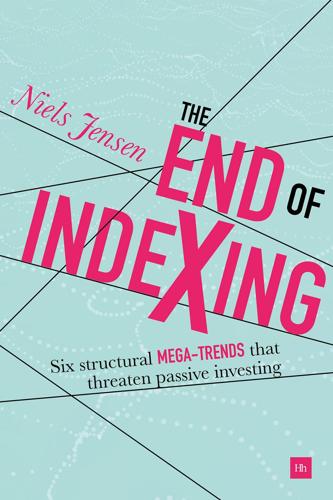
The End of Indexing: Six Structural Mega-Trends That Threaten Passive Investing
by
Niels Jensen
Published 25 Mar 2018
To answer that question, and to understand the ramifications, I need to go back to the developers of game theory, John Nash and John Harsanyi, for a minute. In game theory, and in the context of bargaining, there are four sources of overall power: Economic power. All other things being equal, the greater your economic power is, the greater your overall power is. Nash and Harsanyi labelled it resource endowment. Risk tolerance. The greater your risk tolerance is, relative to the risk tolerance of whoever you are bargaining with, the greater your overall power is. Threat power. In game theory, the greater your threat power is, i.e. your ability to inflict damage on the opposition, the greater your overall power is.
…
In game theory, the greater your threat power is, i.e. your ability to inflict damage on the opposition, the greater your overall power is. Coalition power. In a bargaining situation, if you can gain support from other powers (players in game theory), you boost your own overall power. These four sources of power define your overall power in bilateral bargaining. Economic power is shifting from West to East With respect to the first of the four sources of power, economic power is a combination of the sheer might of the economy in question and how fast it is growing. The US economy is still much larger than the Chinese economy, but the latter is growing faster; hence the point I made earlier that it is only a question of time before China’s economic power is bigger than that of the US.
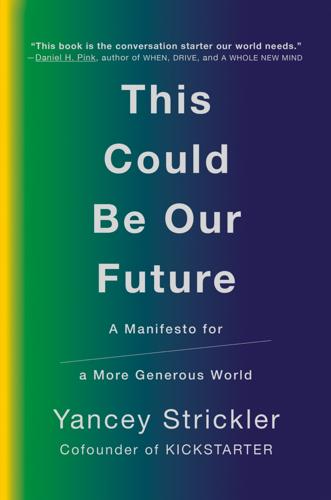
This Could Be Our Future: A Manifesto for a More Generous World
by
Yancey Strickler
Published 29 Oct 2019
The secretaries achieved the ideal outcome of the game. According to the model of rationality set by game theory, the secretaries weren’t playing correctly. Pursuing your immediate self-interest was the rational thing to do. * * * ■ ■ ■ ■ The RAND Corporation published The Compleat Strategyst with the goal of expanding the application of game theory in day-to-day life. “We believe it possible that Game Theory, as it develops—or something like it—may become an important concept and force in many phases of life,” author J. D. Williams wrote. They were right. Game theory became a tool for a new kind of “hyperrational” way of thinking.
…
Had anyone made this case before? And then one day I found something. While reading a fascinating book called Age of Fracture by Daniel Rodgers, I came across mention of a movement called communitarianism, where a more expansive set of values was embraced. In fact, one of the core game theorists at the RAND Corporation (John Nash, subject of the biography and film A Beautiful Mind) moved to a communitarian community in the 1970s. Intrigued, I continued to dig into communitarianism until I came across a book by Michael Walzer. Walzer is a professor emeritus of social science at Princeton University’s Institute for Advanced Study.
…
The Defense Department asked a group of scientists and mathematicians at an elite think tank called the RAND Corporation to come up with a strategy for what the United States should do in this new nuclear age. To study the situation, the researchers turned to a then-new field called game theory. Game theory uses mathematical models to determine the optimal, rational strategies in games and other strategic conflicts. When applied to the nuclear standoff with the Soviet Union, game theory allowed the scientists to consider different approaches the United States might take, how the USSR might respond, and where things might go from there. This greatly expanded the decision makers’ awareness of the potential outcomes of whatever strategy they considered.
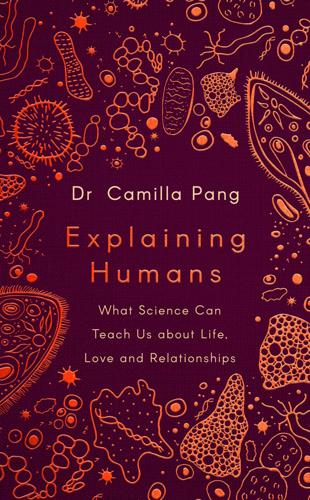
Explaining Humans: What Science Can Teach Us About Life, Love and Relationships
by
Camilla Pang
Published 12 Mar 2020
Game theory was pioneered by two mathematicians whose work helped lay the foundations for the modern study of artificial intelligence: John von Neumann and John Nash. Like agent-based models, it looks at how different players within a certain, rules-based system interact. But it goes further by looking at the consequences of their various choices: how will a decision by one or several players in the game affect everyone else? Game theory looks at the whole picture, assuming a player doesn’t just consider their own decisions and their consequences, but those of the other players as well – predicting both what they may know, and how they are likely to act. Among game theory’s many ideas and applications is the Nash equilibrium.
…
It’s between these individual needs, local connections and global norms that the actual etiquette of a system is to be found. Game theory ABM can help you to discover what the etiquette is in a particular context. But it doesn’t tell you anything about why people behave this way, or their intentions. Nor does it answer the most pressing question surrounding etiquette: how is someone going to react to what we say or do next? For that we need to delve into the science of game theory, which maps not just how different agents in a system interact, but what their motivations are, and why they make certain decisions. Game theory was pioneered by two mathematicians whose work helped lay the foundations for the modern study of artificial intelligence: John von Neumann and John Nash.
…
I had failed to take into account that he was bald, shiningly so. For me, game theory is less about winning and more about surviving the life experiences that nothing has prepared me for. I don’t want to beat the other players, just to cross the board without sending too many of them flying, like my mum’s poor friend at the Christmas party. This is the counter-intuitive benefit of game theory. While ostensibly being a playbook for rational decision making, it also reminds us of its limits. If we put everything in our lives through the lens of game theory, then we would end up in something like the dystopia that Thomas Hobbes outlined in Leviathan, as the fate of humanity without a body politic to bind it together.
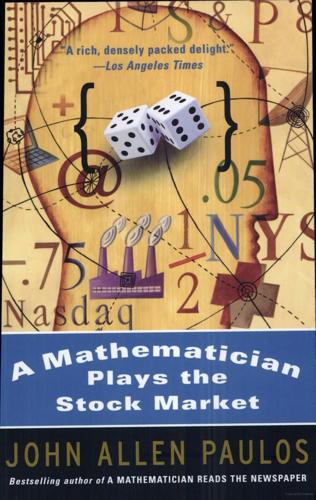
A Mathematician Plays the Stock Market
by
John Allen Paulos
Published 1 Jan 2003
The Numbers Man—A Screen Treatment An astonishing amount of attention has been paid recently to fictional and narrative treatments of mathematical topics. The movies Good Will Hunting, Pi, and The Croupier come to mind; so do plays such as Copenhagen, Arcadia, and The Proof, the two biographies of Paul Erdos, A Beautiful Mind, the biography of John Nash (with its accompanying Academy Award-winning movie), TV specials on Fermat’s Last Theorem, and other mathematical topics, as well as countless books on popular mathematics and mathematicians. The plays and movies, in particular, prompted me to expand the idea in the stock-newsletter scam discussed above (I changed the focus, however, from stocks to sports) into a sort of abbreviated screen treatment that highlights the relevant mathematics a bit more than has been the case in the productions just cited.
…
It requires faster machines, better data, improved models, and the smarter use of mathematical tools, from conventional statistics to neural nets (computerized learning networks, the connections between the various nodes of which are strengthened or weakened over a period of training). If this is possible for anyone or any group to achieve, it’s not likely to remain so for long. Game Theory and Supernatural Investor/Psychologists But what if, contrary to fact, there were an entity possessing sufficient complexity and speed that it was able with reasonably high probability to predict the market and the behavior of individuals within it? The mere existence of such an entity leads to Newcombe’s paradox, a puzzle that calls into question basic principles of game theory. My particular variation of Newcombe’s paradox involves the World Class Options Market Maker (WCOMM), which (who?)
…
Chapter 8 - Connectedness and Chaotic Price Movements Insider Trading and Subterranean Information Processing Trading Strategies, Whim, and Ant Behavior Chaos and Unpredictability Extreme Price Movements, Power Laws, and the Web Economic Disparities and Media Disproportions Chapter 9 - From Paradox to Complexity The Paradoxical Efficient Market Hypothesis The Prisoner’s Dilemma and the Market Pushing the Complexity Horizon Game Theory and Supernatural Investor/Psychologists Absurd Emails and the WorldCom Denouement Bibliography Index Copyright Page Also by John Allen Paulos Mathematics and Humor (1980) I Think Therefore I Laugh (1985) Innumeracy: Mathematical Illiteracy and its Consequences (1988) Beyond Numeracy: Ruminations of a Numbers Man (1991) A Mathematician Reads the Newspaper (1995) Once Upon a Number: The Hidden Mathematical Logic of Stories (1998) To my father, who never played the market and knew little about probability, yet understood one of the prime lessons of both.
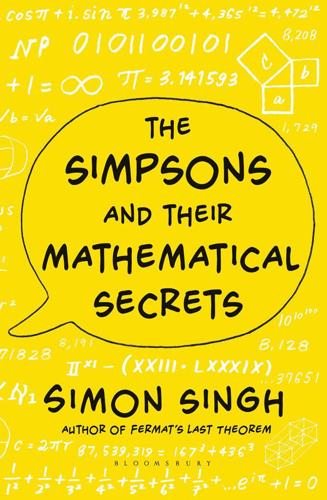
The Simpsons and Their Mathematical Secrets
by
Simon Singh
Published 29 Oct 2013
In other words, out of the entire gang of Tinseltown nerds, Westbrook is overall the tinseliest and the nerdiest.8 I first became aware of Erdős-Bacon numbers thanks to Dave Bayer, a mathematician at Colombia University. He was a consultant on the film A Beautiful Mind, based on Sylvia Nasar’s acclaimed biography of the mathematician John Nash, who had won the Nobel Prize in Economic Sciences in 1994. Bayer’s responsibilities included checking the equations that appeared on screen and acting as Russell Crowe’s hand double in the blackboard scenes. Bayer was also given a minor role toward the end of the film, when the Princeton mathematics professors offer their pens to Nash to acknowledge his great discoveries.
…
Joel Sokol at the Georgia Institute of Technology gives a lecture titled “Making Decisions Against an Opponent: An Application of Mathematical Optimization,” which includes slides describing games of rock-paper-scissors played by characters in The Simpsons. The lecture focuses on game theory, an area of mathematics concerned with modeling how participants behave in situations of conflict and cooperation. Game theory can offer insights into everything from dominoes to warfare, from animal altruism to trade union negotiations. Similarly, Dirk Mateer, an economist at Pennsylvania State University with a strong interest in mathematics, also makes use of The Simpsons and scenes involving rock-paper-scissors when he teaches game theory to his students. Rock-paper-scissors (RPS) seems like a trivial game, so you might be surprised that it is of any mathematical interest.
…
The truth is that many of the writers of The Simpsons are deeply in love with numbers, and their ultimate desire is to drip-feed morsels of mathematics into the subconscious minds of viewers. In other words, for more than two decades we have been tricked into watching an animated introduction to everything from calculus to geometry, from π to game theory, and from infinitesimals to infinity. “Homer3,” the third segment in the three-part episode “Treehouse of Horror VI” (1995) demonstrates the level of mathematics that appears in The Simpsons. In one sequence alone, there is a tribute to history’s most elegant equation, a joke that only works if you know about Fermat’s last theorem, and a reference to a $1 million mathematics problem.

Survival of the Richest: Escape Fantasies of the Tech Billionaires
by
Douglas Rushkoff
Published 7 Sep 2022
This drive toward wealth and power is like a poker game where everyone stays at the table until a single player has won all the money. It’s a drive toward inequality as the ultimate goal—what economists would call a Gini coefficient of 1—where just one person has accumulated everything. All the financial, technological, and cultural feedback loops in which they are participating support this singular drive. As game theorist John Nash (the subject of the movie A Beautiful Mind ) demonstrated in his early work, the wealthier party in a transaction always has an advantage if no rules or limits are put in place to counter this effect. A game of “no limits” poker always favors the wealthier player, because they can repeatedly force their opponent to stake the entirety of their holdings.
…
Game B is meant to be a “civilization level social operating system,” where we go from what we currently think of as Western civilization (the failing, self-destructive Game A we are now play ing) to a more self-organized, networked, decentralized, and resilient way of life. Rutt has applied his widely acknowledged expertise in complex systems and game theory to work through a myriad of issues and arrive at a new model of human organization. Instead of being dominated by corporations and nation-states, we are to live and work in small, self-sovereign, kibbutz-like collectives, each with its own governance structure but linked to the others through trade, culture, and technology.
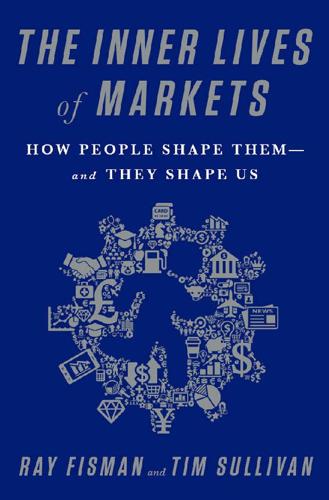
The Inner Lives of Markets: How People Shape Them—And They Shape Us
by
Tim Sullivan
Published 6 Jun 2016
That challenge helped spur Arrow, who went ahead and proved it anyway. The year 1951 had seen a major technical advance that made proof of existence far easier than Wald might have realized. John Nash, the game theorist made famous by the book and movie A Beautiful Mind, had borrowed the fixed-point theorem of Japanese mathematician Shizuo Kakutani to prove the existence of Nash equilibrium in game theory. In Arrow’s retelling, at that point it was obvious how to go about proving the existence of competitive equilibrium, and it was a race among himself, French economist Debreu, and several others to see who could do it first and do it best.
…
Cowles was inspired by the Great Depression and driven by the desire to bring scientific rigor to the study of the economy. The foundation’s founding motto was “Science is Measurement.”11 The second, the RAND Corporation, first established as a joint project by the Douglas Aircraft Company and the US Department of War in 1945, used game theory to analyze the United States’s geopolitical position relative to the Soviet Union. Game theory—a mathematical approach to analyzing strategic choices—emerged from the work of Princeton mathematician John von Neumann in the 1930s, who collaborated with his economist colleague Oskar Morgenstern to write Theory of Games and Economic Behavior (published in 1944), which launched the field.
…
That depends on how Pepsi’s CEO thinks Coke will respond, which in turn depends on what Coke’s CEO expects that Pepsi’s response to their price reduction will be. And so on. Game theory was a way of cutting through the infinite regression of “what he thinks I think he thinks . . .” Although technical, some of von Neumann and Morgenstern’s ideas eventually filtered into the mainstream, and so resonated with the public imagination that the two researchers found themselves on the front page of the New York Times in 1946 under the headline, “Mathematical Theory of Poker Is Applied to Business Problems.”12 Game theory, though, was about much more than just business. Most famously, perhaps, RAND economists and mathematicians developed the doctrine of nuclear deterrence by mutually assured destruction (MAD) under the guidance of then defense secretary Robert McNamara (himself an economist by training).
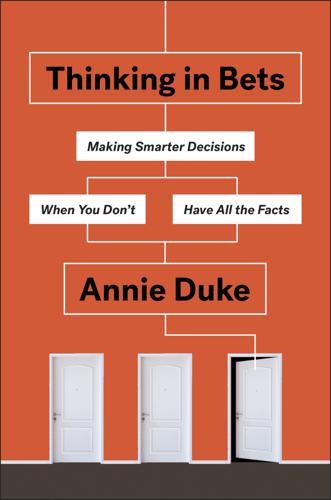
Thinking in Bets
by
Annie Duke
Published 6 Feb 2018
Initial reviews in the most prestigious academic journals heaped it with praise, like “one of the major scientific achievements of the first half of the twentieth century” and “ten more such books and the progress of economics is assured.” Game theory revolutionized economics, evidenced by at least eleven economics Nobel laureates connected with game theory and its decision-making implications, including John Nash (a student of von Neumann’s), whose life story was chronicled in the Oscar-winning film A Beautiful Mind. Game theory has broad applications outside economics, informing the behavioral sciences (including psychology and sociology) as well as political science, biomedical research, business, and numerous other fields. Game theory was succinctly defined by economist Roger Myerson (one of the game-theory Nobel laureates) as “the study of mathematical models of conflict and cooperation between intelligent rational decision-makers.”
…
Game theory was succinctly defined by economist Roger Myerson (one of the game-theory Nobel laureates) as “the study of mathematical models of conflict and cooperation between intelligent rational decision-makers.” Game theory is the modern basis for the study of the bulk of our decision-making, addressing the challenges of changing conditions, hidden information, chance, and multiple people involved in the decisions. Sound familiar? Fortunately, you don’t need to know any more than this about game theory to understand its relevance. And the important thing for this book is that John von Neumann modeled game theory on a stripped-down version of poker. Poker vs. chess In The Ascent of Man, scientist Jacob Bronowski recounted how von Neumann described game theory during a London taxi ride.
…
Except for Kissinger, who was a relatively obscure Harvard professor when the film was made, these are all conceivable models. The influence of John von Neumann on game theory, and of game theory on modern economics, is unquestioned. At least eleven Nobel laureates in economics have been cited for their work connected with or influenced by game theory. NobelPrize.org has cited the following eleven winners of the Prize in Economic Sciences (formally called “The Sveriges Riksbank Prize in Economic Sciences in Memory of Alfred Nobel”), by year, field, and contribution: (1) John C. Harsanyi, (2) John F. Nash Jr., and (3) Reinhard Selten (1994, game theory, “for their pioneering analysis of equilibria in the theory of non-cooperative games”); (4) Robert J.
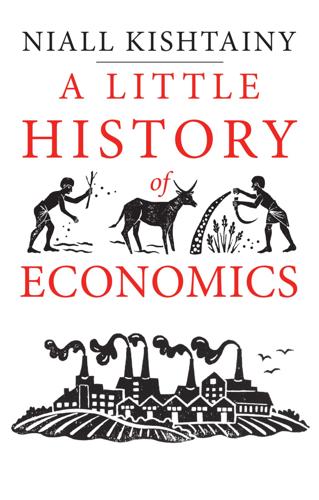
A Little History of Economics
by
Niall Kishtainy
Published 15 Jan 2017
In 1950 a mathematician named John Nash (1928–2015) came up with a solution. Nash thought of his idea when he was still a student at Princeton University. He decided to pay a visit to von Neumann, who was then a Princeton professor, to tell him about it. Even though von Neumann was by then very famous, it didn’t deter Nash. (Before that, he’d popped in to see Einstein to discuss some new ideas he’d had about the expansion of the universe.) The great von Neumann sent Nash away, telling him that his idea was trivial. In fact Nash’s idea became the most important in game theory, still used all the time today.
…
There’s only one way for a market to be perfectly competitive or to be a monopoly. But there are many ways for it to be in between – to be imperfectly competitive – and so it’s hard to find a theory that covers all the possibilities. Today, economists use the field of game theory, a method which allows them to examine the behaviour of firms in lots of different cases. As we’ll see in Chapter 20, game theory is the study of situations in which what one person does affects the outcomes for someone else. It’s especially useful for studying the behaviour of oligopolies: economists now use it all the time to examine the complex interactions that take place between firms as they battle it out for market domination.
…
One arms itself with missiles to aim at its enemy, and because one does, so does the other. Each country tries to gain an advantage by buying weapons. The result is an ‘arms race’. Both end up with huge stocks of missiles aimed at their enemy. The arms race is an example of ‘game theory’, a field of mathematics and economics that emerged in the 1940s and 1950s. Game theory looks at how countries, firms and people behave in situations in which what one side does affects outcomes for the other. When your enemy buys missiles it puts you at a disadvantage and makes your country less safe; when you buy missiles you do the same to your enemy.

The Wisdom of Psychopaths: What Saints, Spies, and Serial Killers Can Teach Us About Success
by
Kevin Dutton
Published 15 Oct 2012
When a box of matches spilled onto the floor, both of them simultaneously called out “111.” As Sacks gathered up the matches, he started counting … On a similar note, the well-worn stereotype of the brilliant “tortured artist” is also not without foundation. The painter Vincent van Gogh, the dancer Vaslav Nijinsky, and the father of “game theory” (of which more later) John Nash were all psychotic. Coincidence? Not according to Szabolcs Kéri, a researcher at Semmelweis University in Budapest, who appears to have uncovered a genetic polymorphism associated with both schizophrenia and creativity. Kéri has found that people with two copies of a particular single-letter DNA variation in a gene called neuregulin 1, a variation that has been previously linked to psychosis—as well as poor memory and sensitivity to criticism—tend to score significantly higher on measures of creativity compared with individuals who have one or no copy of the variation.
…
The chances are it’s going to be the latter—for which, it turns out, there are sound biological reasons. To Plea or Not to Plea We’ve already seen game theory in action earlier in this chapter. A branch of applied mathematics devoted to the study of strategic situations, to the selection of optimal behavioral strategies in circumstances in which the costs and benefits of a particular choice or decision are not set in stone but are, in contrast, variable, game theory presents scenarios that are intrinsically dynamic. Unsurprisingly perhaps, given game theory’s inherent emphasis on the relationship between individual agency and the wider social group, it’s not uncommon to find rich incrustations of this semiprecious mathematical outcrop embedded within branches of natural selection—within models and theories of how various behaviors or life strategies might have evolved.
…
There are a number of theories about how psychopathy might first have developed, and we’ll be looking at those a little later on. But an overarching question in the grand etiological scheme of things is from which ontological perspective the condition should actually be viewed: from a clinical standpoint, as a disorder of personality? Or from a game theory standpoint, as a legitimate biological gambit—a life history strategy conferring significant reproductive advantages in the primeval ancestral environment? Kent Bailey, emeritus professor in clinical psychology at Virginia Commonwealth University, argues in favor of the latter, and advances the theory that violent competition within and between proximal ancestral groups was the primary evolutionary precursor of psychopathy (or, as he puts it, the mind-set of the “warrior hawk”).
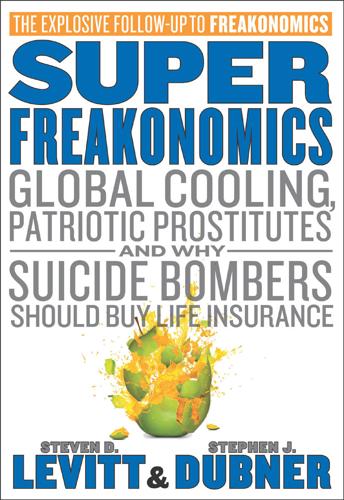
SuperFreakonomics
by
Steven D. Levitt
and
Stephen J. Dubner
Published 19 Oct 2009
But if the lab could unravel the scientific mysteries of the universe, surely it could help figure out something as benign as altruism. These new experiments typically took the form of a game, run by college professors and played by their students. This path had been paved by the beautiful mind of John Nash and other economists who, in the 1950s, experimented broadly with the Prisoner’s Dilemma, a game-theory problem that came to be seen as a classic test of strategic cooperation. (It was invented to glean insights about the nuclear standoff between the United States and the Soviet Union.) By the early 1980s, the Prisoner’s Dilemma had inspired a lab game called Ultimatum, which works as follows.
…
Knetsch, and Richard Thaler, “Fairness as a Constraint on Profit Seeking: Entitlements in the Market,” American Economic Review 76, no. 4 (September 1986); Robert Forsythe, Joel L. Horowitz, N. E. Savin, and Martin Sef-ton, “Fairness in Simple Bargaining Experiments,” Games and Economic Behavior 6, no. 3 (May 1994); Colin F. Camerer, Behavioral Game Theory (Princeton University Press, 2003); and John A. List, “Dictator Game Giving Is an Experimental Artifact,” working paper, 2005. ORGAN TRANSPLANTS: The first successful long-term kidney transplant was performed at the Peter Bent Brigham Hospital in Boston by Joseph Murray in December 1954, as related in Nicholas Tilney, Transplant: From Myth to Reality (Yale University Press, 2003). / 111 “Donorcyclists”: see Stacy Dickert-Conlin, Todd Elder, and Brian Moore, “Donorcycles: Do Motorcycle Helmet Laws Reduce Organ Donations?”

On the Edge: The Art of Risking Everything
by
Nate Silver
Published 12 Aug 2024
There’s some truth to this: these programs are trained by essentially playing against themselves. And they’re designed to achieve a Nash equilibrium or game-theory optimal (GTO) style of play. “Nash equilibrium” is named after the American mathematician John Nash, a discovery for which he shared the Nobel Prize. (Nash is also famous as a result of his portrayal by Russell Crowe in the movie A Beautiful Mind.) I’ll have a lot more to say about game theory later in this chapter, but the idea of a Nash equilibrium is that it’s a defensive approach, one that’s impossible to beat over the long run because it prevents your opponents from exploiting your mistakes.
…
Move fast and break things: Mark Zuckerberg’s iconic Silicon Valley attitude—strike at potential +EV opportunities when you can and worry about the consequences later. Mutually assured destruction: A theory of nuclear deterrence that holds that nuclear states won’t attack one another because they’d be assured of a devastating retaliatory strike if they did. Nash equilibrium: After the Princeton mathematician John Nash, a game theory solution in which all participants have optimized their EV and there are no further gains from unilateral changes in strategy. Nash proved that all games satisfying certain conditions have at least one equilibrium, although some have more than one. Nerd-snipe: The act of persuading a nerd to study a problem that is geeky or cool, perhaps out of proportion to its underlying importance.
…
Von Neumann and Morgenstern recognized what Brunson and every other poker player does—unless you sometimes bluff, your opponent has no incentive to pay you off when you have a good hand. The applications of game theory are much broader than what we normally think of as “games,” however. In some ways game theory is the core of modern economic theory, since it describes how people choose the most rational option when everyone else is competing for the same scarce resources. I often find myself surprised at how often game theory predicts real-world beahvior, from nuclear deterrence to traffic patterns to how prices are established in a market economy. Let me try my hand at a precise definition: Game theory is the mathematical study of the strategic behavior of two or more agents (“players”) in situations where their actions dynamically impact one another.
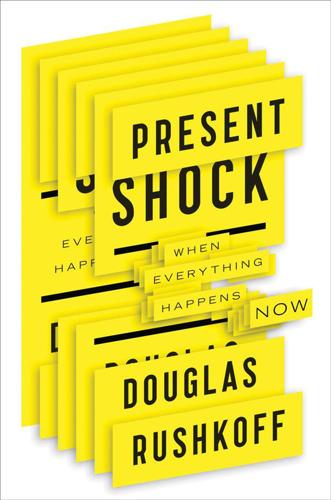
Present Shock: When Everything Happens Now
by
Douglas Rushkoff
Published 21 Mar 2013
Even if there were millions of possible actors, actions, and connections, there were only two real superpowers—the Soviet Union and the United States. Military leaders figured that game theory, based on the mathematics of poker, should be able to model this activity and give us simple enough rules for engagement. And so the RAND Corporation was hired to conduct experiments (like the Prisoner’s Dilemma, which we looked at earlier), determine probable outcomes, and then program computers to respond appropriately in any number of individual circumstances. Led by the as yet undiagnosed paranoid schizophrenic John Nash (the mathematician portrayed in the movie A Beautiful Mind), they adopted a principle called MAD, or mutually assured destruction, which held that if the use of any nuclear device could effectively guarantee the complete and utter annihilation of both sides in the conflict, then neither side would opt to use them.
…
Altruism was simply too blurry. Good planning required predictable behaviors, and the assumption of short-term self-interest certainly makes things easy to see coming. A few decades of game theory and analysis since then have revealed the obvious flaws in Nash’s and RAND’s thinking. As Hungarian mathematician and logician László Méro explains it in his rethink of game theory, Moral Calculations,9 the competitive assumptions in game theory have not been proved by consistent results in real-world examples. In study after study, people, animals, and even bacteria are just as likely to cooperate as they are to compete.
…
By cooperatively negotiating in this fashion—and using battle gestures, previous experiences, and instinct (species’ memory) to calculate the odds of winning or losing the battle—both individuals live on to see another day. In contrast, game-theory tests like the Prisoner’s Dilemma set up competitions where decisions are forced with a lack of information. They are characterized by noncommunication. There is no space for negotiation or transparency of decision making, nor any participation in extending the range of possible outcomes. The prisoners are operating in the least likely circumstances to engender cooperative actions. But the zero-sum logic of game theory can still work, as long as it is actualized in a culture characterized by closedness.
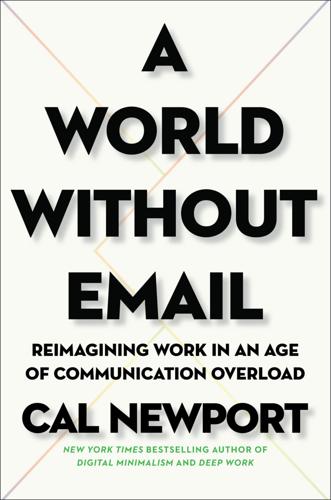
A World Without Email: Reimagining Work in an Age of Communication Overload
by
Cal Newport
Published 2 Mar 2021
Lloyd pointed out an interesting tension: it’s in the individual interest of each herder to graze his animals as much as possible on the commons, and yet when all herders act in their best interest, they’ll inevitably overgraze the commons, rendering it useless to everyone. Similar scenarios of individual interest leading to collective hardship turn out to be common in many different settings—from unstable ecologies, to resource mining, to the behaviors surrounding shared refrigerators. Using the mathematical tools introduced in the mid-twentieth century by John Nash (of A Beautiful Mind fame), you can even precisely analyze this situation, which turns out to be a nice example of what game theorists would call an “inefficient Nash equilibrium.” This economic trivia informs our discussions here because when the hyperactive hive mind emerged due to the drivers summarized earlier in this chapter, communication in the modern office became yet another example of Lloyd’s thought experiment in action.
…
It’s in this context that the hyperactive hive mind, once in place, became devilishly difficult to eradicate, as it’s hard to fix a broken workflow when it’s no one’s job to make sure the workflow functions. In 1833, the British economist William Forster Lloyd proposed a hypothetical scenario, now a classical example in game theory, that can help us better understand this dynamic. The scenario, which eventually became known as the tragedy of the commons,36 considers a town that maintains common grazing land for cattle and sheep, as was typical in Great Britain in the nineteenth century. Lloyd pointed out an interesting tension: it’s in the individual interest of each herder to graze his animals as much as possible on the commons, and yet when all herders act in their best interest, they’ll inevitably overgraze the commons, rendering it useless to everyone.
…
See also specific names Essentialism (McKeown), 221 evolutionary history, 40–42, 46, 48, 84–88 Facebook, 74–75, 81 FaceTime, 148–49, 161 fax machines, xvi, 67–68, 78, 200, 258 federal government, xi–xiv Federal Reserve, 39, 216 feedback, xviii, 11, 59, 83, 156, 170, 184, 236, 264 Ferriss, Tim, 128–29, 201 Feynman, Richard, 245 Fischer, Michael, 80 “Five Things We Need to Know about Technological Change” (Postman), 257–58 Flow, 147–48, 151–52, 155, 158–62 Flynn, Pat, 229–30 focus, 7 on areas of specialization, 228–34, 247–48, 254 on important issues, 23–24 and increasing support staff, 246 office culture of, 225–26 on single tasks, 105, 107, 138, 144–45, 147, 151, 162 on smaller number of tasks, 164–65, 220–22, 231 uninterrupted, 27–30, 32, 57, 227, 236–38, 244 See also attention switching; concentration Ford, Henry assembly line of, 99–101, 116–17, 119–21, 126 influence of, 105 innovations of, 97–101, 108 obsessed with speed, 99, 112–13 Ford Motor Company, 97–101, 116–17, 126 Foster, Jeffrey, 208–13 4-Hour Workweek, The (Ferriss), 128–29, 201 Four Quadrants, 56 fragmented work due to email, 7–9, 57–58, 169, 249 hyperactive hive mind and, 220 increase in, 16–17 and task-switching, 7–8, 15–18, 113 See also attention switching France, 35–36, 38–39, 86 Free (Anderson), xvi freelancers, xx, 32, 190, 197–98, 230–31, 238–39 Freeman, John, 38 Freeman, Joshua, 119 friction, in the workplace, 58–61, 127 Fried, Jason, 195–96 Future of Industrial Man, The (Drucker), 88 game theory, 91 Gazzaley, Adam, 15 GDP, 259 General Motors, 88–89 Georgetown University, 131–33, 135, 166, 192, 222, 250, 255 Georgia Tech, 217 German National Research Center for Information Technology (Bonn), 6–7 Germany, 6–7, 71–72, 100 Getting Things Done (Allen), 56–57 Gmail, 102, 105, 176, 250 González, Victor, 7–9, 57–58 Google, 81, 176, 191, 235–36, 252 Google Home, 252 Google Ventures (GV), 235–36 GPS collars, 47–49 Graham, Paul, 19–20, 28 Grant, Adam, 130, 238 Great Britain, 91, 181 Grove, Andy, 139–40 Gutenberg, 74 Hansson, David H., 195–96 Hartley, Ralph, 180–81 Harvard Business Review, 190, 194–95 Harvard Business School, 37, 82 health, harmed by email, 35–39 healthcare sector, 68, 153–55 Hicks, Michael, 208–13 hierarchies, dominance, 142 High Output Management (Grove), 139–40 Highland Park factory, 99, 108, 116–17 Hill, Doug, 76 Hobbes, Thomas, 142, 245 Homeland Security, xii–xii Honest Signals: How They Shape Our World (Pentland), 50 honey stick gift game, 40–42 horse stirrups, 72–73, 76–77 hospital ERs, 155 Huffington, Arianna, 46 human brain, 13, 61, 111 adds value to information, 103, 121, 259 “ancient,” xix, 40, 44, 46–47, 75, 112 and anxiety over emails, 40, 44, 46–47 and creating valuable output, 113, 218, 226–27 and decision-making/collaboration, 49–51 getting the most out of, xix–xx, 113, 121 and hyperactive hive mind, xviii–xix, xxi, 14, 31 and long workdays, 225 neural circuits of, 48, 50 parallel tracks of attention and, 18 prefrontal cortex of, 14–15 slowed by constant communication, 33, 112 slowed by network switching, 14–16, 18, 103 social circuits of, xviii–xix, 44, 51, 75–76, 112 and social connections, 42–43 and technology, 74–76 human soul, 39 hunter-gatherers, 39–42, 44, 85 hunters, Paleolithic, 84–88 hyperactive hive mind workflow alternatives to, 61, 92–93, 133–34, 194, 222 benefits of, xvii–xviii, 31, 115, 260 and brains’ social circuits, xviii–xix and client protocols, 199–201 and coordination protocols, 186–87 defenders of, 33 depravations of, 91–93, 113, 143 disadvantages of, xviii–xxii, 4–6, 14, 16, 20, 28–31, 33, 39, 43, 46–47, 60–61, 126, 163, 194, 260 drivers of, 77–88, 91, 190, 193 early humans and, 84–86 embraced by offices, 76–78, 87–89, 102, 184, 256 explanation of, xvii–xxii, 51, 258–59 hidden costs of, 3–6, 112 ineffectiveness of, xviii, xxi, 28 and minder roles, 27–28 minimize messaging for, 169 moving away from, xx, 30–33, 100, 104–8, 110, 115, 121, 127, 177, 179, 219 overwhelmed by, 104–5, 152 practitioners of, 3–6, 13, 20, 25–28, 29–32 rise of, xix, 10, 57, 203–4 and work overload, 58, 245 IBM, 68–71, 76 idiosyncrasy credits, 130 Inc. magazine, 201 India, 198 industrial engineering, 135 management, 101, 136–40 manufacturing, 97–103, 108, 112, 116–18, 136–39 revolution, 215, 260 sector, 103, 111, 116–18, 121 work, 88–91 information theory, 179–87 Instagram, 183, 228–29 instant messenger, xiv advantages of, xx, 14 attention switching and, 17, 113 average checking of, xvi–xvii, 11–12 disadvantages of, 3–6 reducing use of, xx, 127, 211 See also Slack Intel, 139–40 interactions (one-on-one), 48, 61, 205 distress when denied of, 43, 45–46 before email, 70 versus email use, 51, 54, 78, 81–82, 248–50 on FaceTime, 148–49 humans’ need for, 40–43, 51, 54 prioritizing them, 223–26 studies of, 49–51, 54 and task boards, 161 interfaces and administrative work, 247 invisible UI, 252 optimizing of, 255 seamless, 130–33, 152 between support and specialists, 250–54 International Archives of Occupational and Environmental Health, The, 36–37 internet, 6, 81, 105–6, 176, 216.
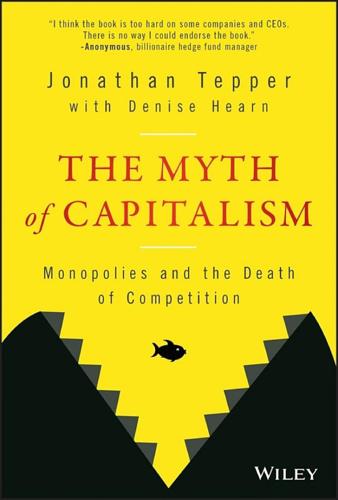
The Myth of Capitalism: Monopolies and the Death of Competition
by
Jonathan Tepper
Published 20 Nov 2018
Game theory has shown that firms are able to reach what look like cooperative outcomes on the basis of genuinely independent decisions.16 Many firms that have been caught continue to collude even after they no longer speak to each other.17 Tacit collusion can lead oligopolistic firms to achieve monopolistic outcomes, leading to reduced output, higher prices, and lower consumer welfare.18 This is known as the “oligopoly problem.” By allowing extreme industry concentration, the government has essentially guaranteed oligopolies can act like monopolies and encouraged outright and tacit collusion. Game theory applies to almost any interaction. Everyone has seen A Beautiful Mind. In the film John Nash, played by Russell Crowe, has an epiphany at a bar with his friends as they are trying to pick up women. There are a group of women: a stunning blonde and some average looking brunettes. All the men want the blonde woman, and one of Nash's friends remarked that Adam Smith would have encouraged competition, and the best strategy would be for them to all go and speak to her.
…
Each kid doesn't seek a theoretical bigger piece – he tries to minimize the chance he ends up with a really small one. Firms will often collude to avoid competition and minimize their maximum loss. That's what Nash was describing in the film with the blonde. There is much more to game theory than walking into a bar to talk to a blonde or dividing a cake. The most famous example in game theory is The Prisoner's Dilemma. If two prisoners are caught by the police and interrogated separately, they each have a difficult choice to make: to snitch or not to snitch. They can both be silent and not rat on each other. That is the best outcome for both.
…
They noted that there was a very close “relationship between the ability of a cartel to sustain collusion and the discount rate of its members.”15 (See Figure 2.1) Figure 2.1 Zero and Negative Central Bank Rates Promote Cartels SOURCE: Variant Perception. You don't need players to talk to each other to get collusion. Game theory has shown that firms are able to reach what look like cooperative outcomes on the basis of genuinely independent decisions.16 Many firms that have been caught continue to collude even after they no longer speak to each other.17 Tacit collusion can lead oligopolistic firms to achieve monopolistic outcomes, leading to reduced output, higher prices, and lower consumer welfare.18 This is known as the “oligopoly problem.”
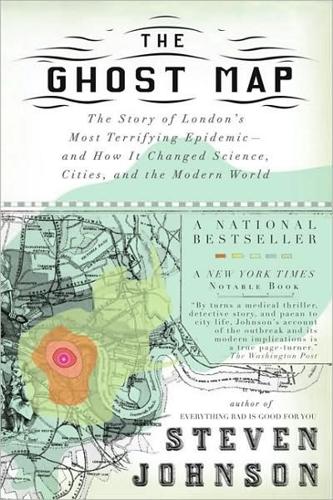
The Ghost Map: A Street, an Epidemic and the Hidden Power of Urban Networks.
by
Steven Johnson
Published 18 Oct 2006
But somehow the nonstop traffic and bustle of Regent Street is almost imperceptible from the smaller lanes and alleys of western Soho, largely because there are very few conduits that open directly onto Regent Street. Walking around the neighborhood, it feels almost as if a barricade has been erected, keeping you from reaching the prominent avenue that you know is only a few feet away. And indeed, the street layout was explicitly designed to serve as a barricade. When John Nash designed Regent Street to connect Marylebone Park with the Prince Regent’s new home at Carlton House, he planned the thoroughfare as a kind of cordon sanitaire separating the well-to-do of Mayfair from the growing working-class community of Soho. Nash’s explicit intention was to create “a complete separation between the streets occupied by the Nobility and Gentry, and the narrower Streets and meaner houses occupied by mechanics and the trading part of the community.… My purpose was that the new street should cross the eastern entrance to all the streets occupied by the higher classes and to leave out to the east all the bad streets.”
…
How long before those two sets intersect? That driver with the rigged SUV isn’t going to be deterred by the conventional logic of détente-era nuclear politics. Mutually assured destruction isn’t much of a deterrent to him. Mutually assured destruction, in fact, sounds like a pretty good outcome. Game theory has always had trouble accounting for players with no rational self-interest, and the theories of nuclear deterrence are no exception. And once the bomb goes off, there’s no second line of defense—no vaccines or quarantines to block off the worst-case scenario. There will be maps, but they’ll be maps of incineration and fallout and mass graves.

Human Compatible: Artificial Intelligence and the Problem of Control
by
Stuart Russell
Published 7 Oct 2019
(See the notes for the complete analysis.24) The general criterion is very simple, however: Alice’s strategy is the best she can devise, assuming that Bob’s is fixed. Bob’s strategy is the best he can devise, assuming that Alice’s is fixed. If both conditions are satisfied, we say that the strategies are in equilibrium. This kind of equilibrium is called a Nash equilibrium in honor of John Nash, who, in 1950 at the age of twenty-two, proved that such an equilibrium exists for any number of agents with any rational preferences and no matter what the rules of the game might be. After several decades’ struggle with schizophrenia, Nash eventually recovered and was awarded the Nobel Memorial Prize in Economics for this work in 1994.
…
As soon as someone else comes along, then, an agent will need some other way to make rational decisions. This is where game theory comes in. Despite its name, game theory isn’t necessarily about games in the usual sense; it’s a general attempt to extend the notion of rationality to situations with multiple agents. This is obviously important for our purposes, because we aren’t planning (yet) to build robots that live on uninhabited planets in other star systems; we’re going to put the robots in our world, which is inhabited by us. To make it clear why we need game theory, let’s look at a simple example: Alice and Bob playing soccer in the back garden (figure 3).
…
For this reason, we will need to generalize IRL from the single-agent setting to the multi-agent setting—that is, we will need to devise learning algorithms that work when the human and robot are part of the same environment and interacting with each other. With a human and a robot in the same environment, we are in the realm of game theory—just as in the penalty shoot-out between Alice and Bob on this page. We assume, in this first version of the theory, that the human has preferences and acts according to those preferences. The robot doesn’t know what preferences the human has, but it wants to satisfy them anyway. We’ll call any such situation an assistance game, because the robot is, by definition, supposed to be helpful to the human.10 Assistance games instantiate the three principles from the preceding chapter: the robot’s only objective is to satisfy human preferences, it doesn’t initially know what they are, and it can learn more by observing human behavior.
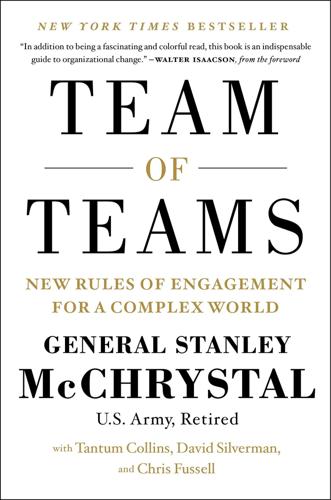
Team of Teams: New Rules of Engagement for a Complex World
by
General Stanley McChrystal
,
Tantum Collins
,
David Silverman
and
Chris Fussell
Published 11 May 2015
The daily O&I briefing lay at the core of our transformation: this pumped information about the entire scope of our operations out to all members of the Task Force and partner agencies, and also offered everyone the chance to contribute. CHAPTER 9 BEATING THE PRISONER’S DILEMMA In one of the most memorable scenes from Ron Howard’s 2001 movie A Beautiful Mind, the protagonist—mathematician John Nash, played by Russell Crowe—is sitting with three colleagues in a Princeton bar when four women walk through the door. One of them, referred to only as “the blonde,” is breathtakingly beautiful. One sultry glance from her over to the mathematicians’ table and the men are convinced that she is interested—but who is to be the lucky man?
…
With a faint grin, he says, “It’s the only way we win,” then runs out of the bar to spend the night alone recording his epiphany. This fictionalized episode provides a good introduction to one of the major ideas of game theory: while Adam Smith has led us to believe that, as movie-Nash summarizes it, “the best result comes from everyone in the group doing what’s best for himself,” movie-Nash adds that there are times when “the best result would come from everyone in the group doing what’s best for themselves . . . and the group.” • • • This basic tenet of game theory is also illustrated by the Prisoner’s Dilemma. In this famous thought experiment, two criminals—coconspirators—are arrested.
…
From the launch pad of NASA’s famed Apollo project that put the first human on the moon, to a blacked-out helicopter putting an Army Special Forces operator on a roof in Fallujah, the reader is introduced to shared consciousness: the way transparency and communication can be used in an organization to produce extraordinary outcomes across even large groups. And the Prisoner’s Dilemma and game theory will illustrate how the simple concept of trust is, in large organizations, anything but simple to create. Part IV: Letting Go probes the history, advantages, and imperatives of truly empowered execution in an organization—pushing decision making and ownership to the right level for every action.
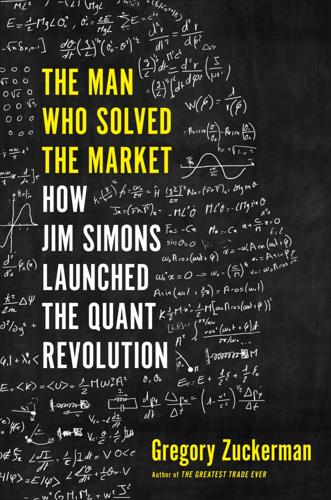
The Man Who Solved the Market: How Jim Simons Launched the Quant Revolution
by
Gregory Zuckerman
Published 5 Nov 2019
The Massachusetts Institute of Technology became an obvious choice. “When I heard MIT didn’t have a football team, I knew it was the school for me,” he says. Moving to Cambridge, Massachusetts, Berlekamp dabbled in physics, economics, computers, and chemistry. As a freshman, he was selected to participate in an advanced calculus class taught by John Nash, the game theorist and mathematician who later would be immortalized in Sylvia Nasar’s book A Beautiful Mind. One day, in early 1959, Nash was lecturing at the chalkboard when a student raised his hand to ask a question. Nash turned to him and stared intensely. After several minutes of awkward silence, Nash pointed a finger at the student, berating him for having the temerity to interrupt his lecture.
…
They’d take turns adding lines, linking dots, and closing squares, playing dots and boxes, a century-old strategy game popular at the time in the Midwest. Some viewed the game as simple child’s play, but dots and boxes has surprising complexity and mathematical underpinnings, something Berlekamp came to appreciate later in life. “It was an early education in game theory,” Berlekamp says. By the time Berlekamp entered Fort Thomas Highlands High School, in 1954, he was a wiry five-foot-ten-inch young man with a good idea of what he enjoyed inside and outside the classroom. In school, it was mostly math and science. Detecting an intelligence that stood out from others, his classmates elected Berlekamp class president.
…
Berlekamp’s apology led to an introduction to a student from England named Jennifer Wilson, whom he married in 1966.1 Berlekamp became an expert in decoding digital information, helping NASA decipher images coming back from satellites exploring Mars, Venus, and other parts of the solar system. Employing principles he had developed studying puzzles and games, like dots and boxes, Berlekamp cofounded a branch of mathematics called combinatorial game theory and wrote a book called Algebraic Coding Theory, a classic in the field. He also constructed an algorithm, appropriately named Berlekamp’s algorithm, for the factorization of polynomials over finite fields, which became a crucial tool in cryptography and other fields. Berlekamp wasn’t nearly as capable at navigating campus politics, as he soon found himself caught in a raging turf war between departments in Berkeley’s College of Letters and Science.

Super Thinking: The Big Book of Mental Models
by
Gabriel Weinberg
and
Lauren McCann
Published 17 Jun 2019
The rub is that if your co-conspirator follows the same strategy, you both go away for much longer than if you both just remained silent (five years versus one year). Hence the dilemma: do you risk their betrayal, or can you trust their solidarity and emerge with a small sentence? The dual betrayal with its dual five-year sentences is known as the Nash equilibrium of this game, named after mathematician John Nash, one of the pioneers of game theory and the subject of the biopic A Beautiful Mind. The Nash equilibrium is a set of player choices for which a change of strategy by any one player would worsen their outcome. In this case, the Nash equilibrium is the strategy of dual betrayals, because if either player instead chose to remain silent, that player would get a longer sentence.
…
(Sometimes people also say crossing the Rubicon, referencing Julius Caesar’s crossing of the Rubicon River with his troops in 49 B.C., deliberately breaking Roman law, making armed conflict inevitable and ultimately leading to him becoming dictator of Rome.) Game theory can again help you work through your potential exit strategies, assessing likely long-term outcomes and evaluating how various tactics might affect them. While not all situations parallel game-theory models (like the prisoner’s dilemma or the ultimatum game), most can still fruitfully be examined through a game-theory lens. In any conflict, whether in the endgame stage or otherwise, we encourage you to list the choices currently available to all the “players,” along with the consequences and payoffs.
…
—there are usually winners and losers. However, game theorists recognize that in real-life conflicts there isn’t always a clear winner or a clear loser. In fact, sometimes everyone playing the game can win and other times everyone can lose. The most famous “game” from game theory is called the prisoner’s dilemma. It can be used to illustrate useful game-theory concepts and can also be adapted to many life situations, including the arms race. Here’s the setup: Suppose two criminals are captured and put in jail, each in their own cell with no way to communicate. The prosecutor doesn’t have enough evidence to convict either one for a major crime but does have enough to convict both for minor infractions.
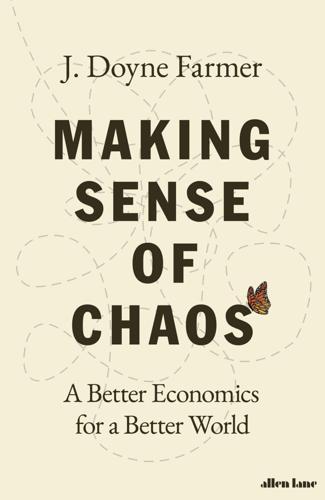
Making Sense of Chaos: A Better Economics for a Better World
by
J. Doyne Farmer
Published 24 Apr 2024
There are many different kinds of games: Rock-paper-scissors is what is called a normal-form game, in which the players make their moves simultaneously and get an immediate payoff that depends on a combination of their own move and those of the other players. Games provide an excellent testing ground for understanding how agents formulate strategies and how strategic competition evolves over time. There have been five Nobel Prizes awarded in economics for game theory; the most well-known of the recipients is John Nash, protagonist of the 2001 film A Beautiful Mind, starring Russell Crowe. Nash is famous for his 1951 proof that normal-form games always have what is now called a Nash equilibrium.9 This means that each player follows a strategy such that none of them have a better strategy unless one of the other players changes her strategy.
…
At a Nash equilibrium all the agents have (locally) optimized their strategies, in the sense that there are no nearby strategies that are better. In economics, where the problem is to solve for prices and quantities traded, strictly speaking equilibrium means the point where supply equals demand. But game theory has become so integral to the way economists think about the world that they often loosely refer to equilibrium in the strategic sense as the set of agent decisions that (locally) optimize all their utilities. When playing a game, a rational player will find a strategy corresponding to a Nash equilibrium, and in an economy, rational agents will settle into a set of decisions that maximize their utility.
…
No one actually uses reinforcement learning either, but they thought the chaotic patterns we found, in which players chase each other’s strategies, were closer to what they observed. Rock-paper-scissors is just one of an infinite number of possible games. We provided a proof of principle for chaos in game theory, but maybe rock-paper-scissors is an anomaly? Rock-paper-scissors is special because its Nash equilibrium is purely defensive, meaning that, on average, it can never beat another strategy; in most games, the Nash equilibrium, on average, beats other ‘nearby’ strategies.13 When would chaos be likely and when would it be rare?
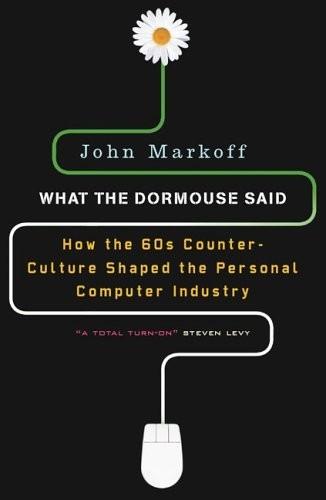
What the Dormouse Said: How the Sixties Counterculture Shaped the Personal Computer Industry
by
John Markoff
Published 1 Jan 2005
In the end, because he had left home, he was able to quit the party without being embarrassed or embarrassing his family. At Princeton, McCarthy was a contemporary of John Nash, who later won a Nobel Prize in economics for his work in game theory, and whose life was chronicled by Sylvia Nasar in A Beautiful Mind. As graduate students, McCarthy, Nash, and several of the other students enjoyed constantly scheming and playing practical jokes on one another, justifying their antics in terms of their game-theory explorations. McCarthy arrived at Stanford for the second time (he had taught math there briefly in the early fifties) as a thirty-five-year-old former wunderkind who had invented the term “artificial intelligence.”
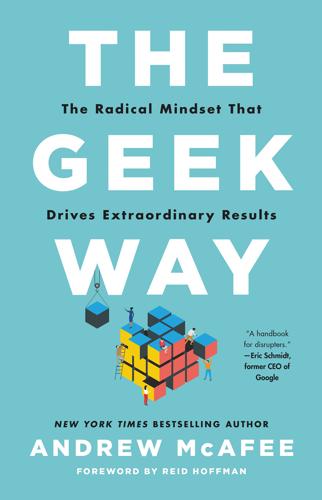
The Geek Way: The Radical Mindset That Drives Extraordinary Results
by
Andrew McAfee
Published 14 Nov 2023
We learned that if we wanted to be sure of having toilet paper in the house during a COVID wave, we had to binge and hoard. Bingeing and hoarding was no fun for anyone involved, but it was still the right move—right in the sense that it beat all the alternatives. It was therefore a stable situation, one that an economist would label a Nash equilibrium. The reasoning that economist and pioneering game theorist John Nash came up with to explain such situations doesn’t include any notion of good or bad, desired or loathed. His reasoning was clean, simple, and heartless: if no player in a game can benefit by unilaterally defecting, then you have a Nash equilibrium. In the “game” of buying toilet paper during the COVID pandemic, a lot of us settled on the strategy of binge-buying and hoarding.
…
It indicates instead that liar’s clubs are pretty widespread, meeting regularly at organizations all around the world. In other words, the prevalence of the liar’s club indicates that, like bureaucracy, it’s a Nash equilibrium—a steady state—under the right conditions. As we saw in the previous chapter, the Nash equilibrium is one of game theory’s most important concepts. We can use game theory, then, to understand both why liar’s clubs are so common and how to break them up. Game of Unknowns Let’s reframe the liar’s club as a game played by project teams all over the world in their weekly meetings. We’ll call it the “Are you on time?” (AYOT?) game. A critical feature of this game is that observability is low for most of a project’s timeline; it’s hard to know from the outside whether a given team member is falling behind.
…
“Say you’re on time” is the right move regardless of how much you know about how the rest of the project is doing. Players don’t need high observability in order to make their moves. Once they realize that everyone else faces the same payoffs as they do, a liar’s club spontaneously forms, with no explicit coordination required. The AYOT? game is a version of the prisoner’s dilemma, one of game theory’s most important concepts. It’s a dilemma because the deception benefits the individual but harms the organization as a whole. It’s also not advantageous to honest players who make the strategic mistake of admitting that they’re behind schedule. And yet, deception among those who are late is a stable Nash equilibrium in the AYOT?
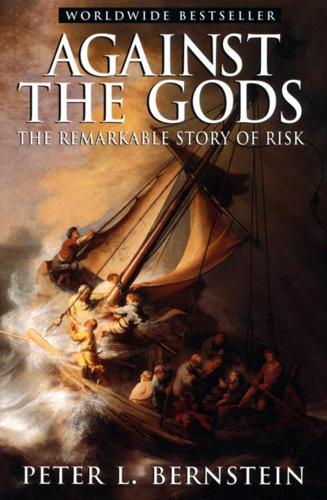
Against the Gods: The Remarkable Story of Risk
by
Peter L. Bernstein
Published 23 Aug 1996
Looking downward vertically, we find that both the choices rank higher than 4: the politicians would rather do nothing or run a deficit than follow a policy that cost them their jobs if their constituents lose their jobs as a result. This outcome is known as a Nash Equilibrium, named after John Nash, another Princetonian and one of the 1994 winners of the Nobel Prize for his contributions to game theory.18 Under the Nash Equilibrium the outcome, though stable, is less than optimal. Both sides would obviously prefer almost anything to this one. Yet they cannot reach a better bargain unless they drop their adversarial positions and work together on a common policy that would give each a supportive, or at least a neutral, role that would keep them from getting into each other's way.
…
Despite its nineteenth-century forebears, game theory represents a dramatic break from earlier efforts to incorporate mathematical inevitability into decision-making. In the utility theories of both Daniel Bernoulli and Jevons, the individual makes choices in isolation, unaware of what others might be doing. In game theory, however, two or more people try to maximize their utility simultaneously, each aware of what the others are about. Game theory brings a new meaning to uncertainty. Earlier theories accepted uncertainty as a fact of life and did little to identify its source. Game theory says that the true source of uncertainty lies in the intentions of others.
…
He claims that game theory would never have amounted to anything had von Neumann not sold it to the military; he even goes so far as to speculate, "Some laid the blame for the escalation of nuclear weaponry directly at the door of game theory."21 Indeed, Mirowski claims that Morgenstern was a "godsend" to von Neumann because he proposed economists as an audience for game theory when no one else was interested. Mirowski is scathing about the naivete and oversimplification of their definitions of "that sadly abused word," rationality, which he describes as "a strange potage."22 Yet, game theory's assumption of rational behavior, and von Neumann and Morgenstern's dream that such behavior can be measured and expressed in numbers, has unleashed a flood of exciting theories and practical applications.
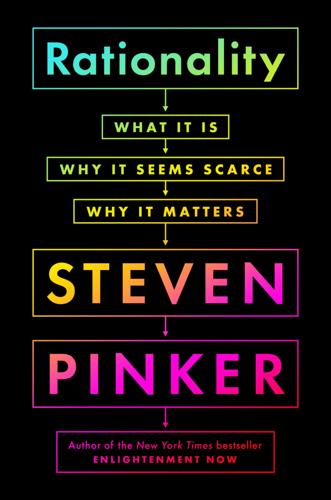
Rationality: What It Is, Why It Seems Scarce, Why It Matters
by
Steven Pinker
Published 14 Oct 2021
If Brad were to deviate from this strategy, Amanda would change hers to exploit him, and vice versa. They are locked in a Nash equilibrium, named after the mathematician John Nash (the subject of the movie A Beautiful Mind ). Each is playing the best strategy given the opponent’s best strategy; any unilateral change would make them worse off. The discovery that in some situations a rational agent must be superhumanly random is just one of the conclusions from game theory that seems outlandish until you realize that the situations are not uncommon in life. The equilibrium in Scissors-Paper-Rock is called an outguessing standoff, and examples are common in sports like tennis, baseball, hockey, and soccer.
…
At that moment I realized that a critical concept was missing from the good doctor’s worldview: game theory, the analysis of how to make rational choices when the payoffs depend on someone else’s rational choices. Game theory was presented to the world by von Neumann and Morgenstern in the same book in which they explained expected utility and rational choice.2 But unlike the dilemmas in which we take our chances against a brainless wheel of fortune and the best strategies turn out to be pretty intuitive, game theory deals with dilemmas that pit us against equally cunning deciders, and the outcomes can turn our intuitions upside down and sideways.
…
Our disproportionate reaction to murder most foul may be irrational in the framework of probability theory but rational in the framework of game theory (chapter 8). Homicide is not like other lethal hazards. A hurricane or shark doesn’t care how we will respond to the harm they have in store for us, but a human killer might. So when people react to a killing with public shock and anger, and redouble their commitment to self-defense, justice, or revenge, it sends a signal to the premeditating killers out there, possibly giving them second thoughts. Game theory may also explain the frenzy set off by a special kind of event that Thomas Schelling described in 1960, which may be called a communal outrage.27 A communal outrage is a flagrant, widely witnessed attack upon a member or symbol of a collective.

Visual Thinking: The Hidden Gifts of People Who Think in Pictures, Patterns, and Abstractions
by
Temple Grandin, Ph.d.
Published 11 Oct 2022
A mild case of schizophrenia can confer tremendous creative abilities. A full-blown case can cause paranoid delusions and destroy a person’s mental health. After a meteoric rise as a young mathematician at Princeton University, earning a PhD in just two years at age twenty-two, John Nash made a significant contribution to game theory, a mathematical tool used to analyze how people might behave in certain interactive situations. Game theory can be applied to any area to resolve conflict, most notably economics and politics. As with so many scientists with exceptional abilities, Nash showed signs of brilliance in childhood. According to Sylvia Nasar’s biography, A Beautiful Mind, he taught himself to read at four and turned his childhood bedroom into a laboratory where he “tinkered with radios, fooled around with electrical gadgets, and did chemistry experiments.”
…
Most often, schizophrenia starts to manifest in the teen years, when a skimpy neural network starts to fall apart. At around age thirty, Nash began to experience psychotic symptoms, and throughout the rest of his life he continued to suffer breakdowns, although he would go on to receive the Nobel Prize in Economics for advancing the mathematics of game theory. What we cannot know is if his early genius was in some way a product of his nascent schizophrenia. The central idea behind neurodiversity is to find a new paradigm for thinking about neurological disorders, including dispensing with the word disorders. Instead of pathologizing conditions like autism, proponents of neurodiversity advocate that these “conditions” be looked at as positive differences.
…
D’Agostino Greenberg Music School, 29 Filtergraph, 105–6 Finkemeier, Marie-Antonine, 269 Fisher, Karla, 100–101 Fitzgerald, Michael, 172 5G cell phone service, 231–32 Flaubert, Gustave, 176 Flint, Michigan, 202 Florida State University, 188 fMRI (functional magnetic resonance imaging), 23, 26, 39 food-processing industry/plants, 76, 91–93, 96, 130–31 food supply business, 3–5 Forbes, 73, 113 Ford, Henry, 90, 126 Forest City Gear, 92–93 Fort Collins, Colorado, 204 Foster, Craig, 267 Frames of Mind: The Theory of Multiple Intelligences (Gardner), 64–65 Fraser, Donald, 144 Frener & Reifer, 5 Frith, Uta, 12–13, 166 Fritsch, Gustav, 22 Frontiers in Psychology, 215 Fukushima Daiichi nuclear power plant, 6, 223–28 Daini nuclear power plant, 224–27, 235 fusion reactor designs, 152–53 Future Farmers of America (FFA), 91 G Gage, Phineas, 23 Gallup, Gordon, 258 Galton, Francis, 167–68 game theory, 160–61 García, Lily Eskelsen, 51 Gardner, Howard, 64–65, 176 Gates, Bill, 70, 124, 180–81, 183, 190 genetics and animals, 199, 245–46, 260, 263, 269–71 and autism, 28, 44, 162, 166–67, 271 careers in, 108–9 and creativity, 156 geniuses and, 165–71 of human brain, 28, 162, 166–67 genius allowing development of, 189–91 attempts to explain it, 156 definition/hallmarks of, 180, 184–91 and dyslexia, 174–78 genetics of, 165–71 geniuses Asperger’s and, 163–64, 181–82 autism and, 15–16, 155–57, 164, 172–74, 181, 189 brains of, 187–89 coders/computer programmers, 178–83 and deciphering of Rosetta Stone, 146–48 need for mentors and exposure, 158–59, 173 poor performers in school, 155–57, 159, 174–76 schizophrenia and, 160–61 and spatial/object thinking, 156, 173–75, 186 as visual thinkers, 6, 138, 174–78, 182–83, 187–89, 191 See also inventors; specific names Gennari, Francesco, 21 genomic trade-offs, 28, 44, 162, 175 Germany, 5, 22, 32, 82, 94–95, 180, 256, 269 Gibson, Eleanor J., 194–95 Giger, Walter, 129 Ginsburg, Noel, 114 Glickstein, Mitchell, 21 Go (game), 232–33 Goldberg, David E., 63 Goldberg, Elkhonon, 184 Golden Gate Bridge, 208 Goldman Sachs, 104–5 Goodall, Jane, 248, 260 Goodson-Espy, Tracy, 62 Google, 2, 116, 124, 148, 232–34 Goyal, Nikhil, 51 Grain Resolution Test, 33 Great Chain of Being, 241–42 Griffin, Edward, 99 Grit (Duckworth), 99 Gropius, Walter, 133 Gualtieri, Camillo Thomas, 28 Gutenberg, Johannes, 90 H Haciomeroglu, Erhan, 74 Hacker, Andrew, 57–58 Halfon, Eyal, 240 Halsey, Brad, 46 Hammerstein, Oscar, 6, 150–51 Handshake (job search website), 117 Happy (elephant), 244 Harris, Elizabeth A., 72 Harvard, 31, 70, 105, 142, 181, 249 Harvard Business Review, 105, 223 Harvey, Allison, 41 Haskell, Molly, 174 Hawking, Stephen, 17 health care workers, 96, 114 health insurance business, 201 Hearing the Voice project, 13 Heathcoat Fabrics, 93 Hegarty, John P., 170 helicopter parents, 77–78 Hendren, Sara, 130 Herculano-Houzel, Suzana, 253 Hewlett Packard Enterprise, 105, 139, 183 Hickenlooper, John, 114 Hidden Life of Dogs, The (Thomas), 271 high-definition fiber tracking (HDFT), 25 Hill, Erica, 240 Hill, Peter, 93 Hines, William C., 200 Hitch, Graham J., 14 Hitzig, Eduard, 22 Höffler, Tim, 32 Holmes, Elizabeth, 152 home economics, 42, 50–51, 53 Home Insurance Building (Chicago), 134–35 homeschooling, 65–67, 100, 157–58 Hopper, Grace Murray, 17 Horgan, Rob, 209 horses and emotion, 259 hands-on work with, 66, 76, 98 laws to protect, 242–44 training of, 246, 267–68 and visual thinkers, 190–91, 268, 274 How to Raise an Adult (Lythcott-Haims), 77 Howe, Elias, 50, 85, 87–88 Hubbard, Douglas W., 201 Hubble Space Telescope, 47, 97, 197 Hug Machine, 190–91 human-animal relationship, 11–12, 100, 238, 247–48, 267–73 Hunt, Gavin, 259 Hunt, Ray, 268 Huntington Ingalls Industries, 109–10 hyperphantasia, 39–42 I IBM, 117, 197–98 IKEA, 176 IKEA Test, 17 Illinois Valedictorian Project, 75–76 In the Mind’s Eye (West), 83, 173–74 Individualized Education Program (IEP), 66, 82 Individuals with Disabilities Education Act (IDEA), 82–83 industrial designers, 3, 106–7, 132 versus engineers, 126–27, 134, 196 as object visualizers, 32–33, 91, 126–27, 134, 196 See also drawing/drafting: and industrial design infrastructure, 6, 55, 79, 119, 202–5, 223, 276–77 Innovation Boot Camp, 46 innovators.
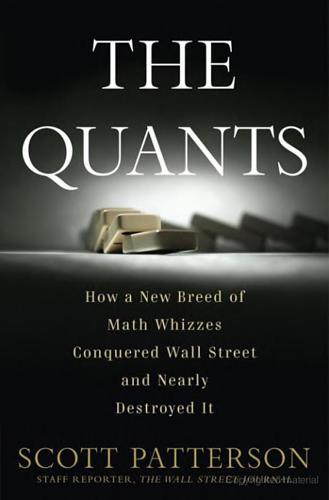
The Quants
by
Scott Patterson
Published 2 Feb 2010
It arrived in the spring of 1959, just before Thorp moved from UCLA to the Massachusetts Institute of Technology. At MIT, Thorp found a hotbed of intellectual creativity that was quietly revolutionizing modern society. The job he stepped into, the coveted position of C. L. E. Moore Instructor, had previously been held by John Nash, the math prodigy who eventually won the Nobel Prize in economics in 1994 for his work on game theory, a mathematical approach to how people compete and cooperate. (Nash later became known as the subject of A Beautiful Mind, the book and movie about the competing forces of his genius and mental illness.) That first summer in Cambridge, Thorp crunched the numbers on blackjack, slowly evolving what would become a historic breakthrough in the game.
…
In 1985, Ax moved the operation to Huntington Beach, California. Axcom was to act as the trading advisor for the fund, which was nominally run as an investing firm owned by a company Simons had founded in July 1982 called Renaissance Technologies. Soon Simons’s growing crew of quants added another math wizard, Elwyn Berlekamp, a game theory expert at Berkeley. Like Ed Thorp, Berlekamp had worked with Claude Shannon and John Kelly at MIT. He’d briefly met Simons during a stint at IDA in the 1960s. The fund put up solid returns for several years, even managing to trade through Black Monday with relatively little damage. In 1988, Ax and Simons renamed the fund Medallion in honor of a math award they’d both won.
…
In 1997, it was absorbed into the Medallion mother ship and called the Factor Nova Funds, adding stat arb firepower to an already state-of-the-art investment machine. It was the first step in making Medallion a genuine multistrategy fund. By then, Berlekamp was gone. He’d left Renaissance at the end of 1990 to pursue academic interests at Berkeley, where he went on to crack game theory puzzlers such as mathematical chess. But the Medallion legend continued to grow. To be sure, the fund has had a few hiccups over the years. In March 2000, when the dot-com bubble began to implode, reversing trends in technology stocks that had been in place for several years, Medallion lost $250 million in three days, nearly wiping out its year-to-date profit.
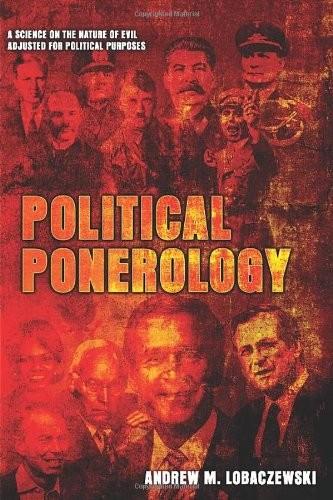
Political Ponerology (A Science on the Nature of Evil Adjusted for Political Purposes)
by
Andrew M. Lobaczewski
Published 1 Jan 2006
From interpersonal relationships and their expression of archetypal dramas to the vectoring of human behaviour to achieve hyperdimensional purposes, Almost Human reveals the mechanics of evil, how it creeps into our lives, and what we need to be aware of in order to avoid it. The case studies of John Nash, the schizoidal creator of Game Theory, and Ira Einhorn, the New Age psychopath who murdered his girlfriend, are the window through which Knight-Jadczyk unravels the intricate web of deception, aims, and counter-aims of the Powers That Be. Almost Human is essential reading for anyone wondering why our world is becoming increasingly controlled and our freedoms more restricted.
…
Braithwaite’s work in the philosophy of the physical sciences was important for his theories on the nature of scientific inductive reasoning and the use of models, as well as on the use of probabilistic laws. He also applied his scientific background to his studies of moral and religious philosophy, particularly in the application of mathematical game theory. In his book Theory of Games as a Tool for the Moral Philosopher (1955), he demonstrated the ways in which game theory could be used to arrive at moral choices and ethical decisions. His classic work was Scientific Explanation: A Study of Theory, Probability and Law in Science (1953), on the methodology of natural science. (Encyclopaedia Britannica Online, http://www.britannica.com/ eb/article-9016188/RB-Braithwaite) [Editor’s note
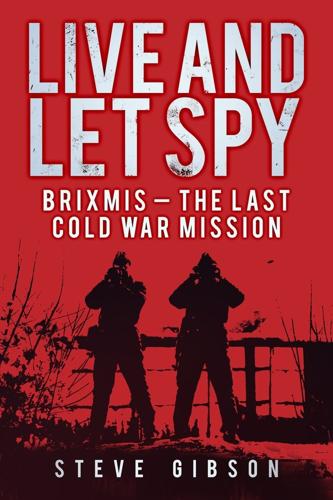
Live and Let Spy: BRIXMIS - the Last Cold War Mission
by
Steve Gibson
Published 2 Mar 2012
Its most depressing manifestation today is government’s moralising intervention in every aspect of private life – drinking, eating, leisure, health, children – that would have been unconscionable just thirty years ago. The brilliant, paranoid-schizophrenic, and Nobel Prize-winning mathematician largely responsible for this development, John Nash, called it ‘Game Theory’. The underlying assumption of Game Theory was that a fearful and suspicious human being would always be inclined to maximise self-interest over any alternative altruistic, collective or collaborative action. The sum of these individual self-interests would in turn create a fearful equilibrium – control – across society that out-weighed the alternative – chaos.
…
It was compounded by an imploding political left incapable of true political activity in the sense of acting together in a common cause beyond selfish opportunism. Indeed, the very notion of the public – a self-conscious body operating in a cohesive and collective interest – became redundant. Yet, many proponents of Game Theory themselves recognise the limitations: simplistic assumptions about human nature; a wilful dismissal of free will; and, stubborn acts of unrequited altruism, philanthropy and self-sacrifice all served to defeat the predicted outcomes of Game Theory calculations – the management of human beings by numbers continues to preside over a rise in inequality and the diminution of social mobility within Western societies, rather than liberate them.
…
Yet, Live and Let Spy also argues that, while Cold War warriors fought a tyrannical and ruthless version of Communism abroad, they remained ignorant of – and lost – an ideological battle at home. That battle saw government and business come to dominate the expectations of their populations in the post-WWII world. This political ideology was fuelled by the construction of a convenient ‘enemy’ abroad, while utilising the Cold War’s Game Theory and Freudian-based public relations management to tame the irrational, self-serving, unconscious nature of individuals at home. Gibson argues that in doing so, liberal democracies traduced power to construct regimes of vacuous politics and ‘negative’ freedom, absent of purpose, meaning, and moral autonomy.
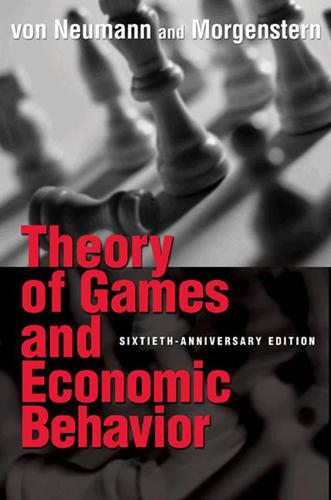
Theory of Games and Economic Behavior: 60th Anniversary Commemorative Edition (Princeton Classic Editions)
by
John von Neumann
and
Oskar Morgenstern
Published 19 Mar 2007
Afterword ARIEL RUBINSTEIN During the past ten years Princeton University Press has done a remarkable job of republishing, in a beautiful and eye-catching format, many of the seminal works from the early days of game theory at Princeton. This new printing of Theory of Games and Economic Behavior, marking the book’s sixtieth anniversary, continues the celebration of game theory. Since the original publication of the book, game theory has moved from the fringe of economics into its mainstream. The distinction between economic theorist and game theorist has virtually disappeared. The 1994 Nobel Prize awarded to John Nash, John Harsanyi, and Reinhard Selten was viewed not just as recognition of three great scholars but also as a victory for game theory as a discipline. Evidence of the immense importance of this book in the development of game theory is the fact that, notwithstanding the intense search for the ancient origins of its ideas, there is consensus that the book was the first major publication in the field.
…
As a consequence, the theory of games was developed almost exclusively by mathematicians in this period. To describe the spirit of the time as seen by another outside observer, we shall paraphrase a section of Robert J. Aumann’s magnificent article on game theory from The New Palgrave Dictionary of Economics [14]. The period of the late ’40s and early ’50s was a period of excitement in game theory. The discipline had broken out of its cocoon and was testing its wings. Giants walked the earth. At Princeton, John Nash laid the groundwork for the general non-cooperative theory and for cooperative bargaining theory. Lloyd Shapley defined a value for coalitional games, initiated the theory of stochastic games, coinvented the core with D.
…
According to this opinion, game theory does not have normative implications and its empirical significance is very limited. Game theory is viewed as a cousin of logic. Logic does not allow us to screen out true statements from false ones and does not help us distinguish right from wrong. Game theory does not tell us which action is preferable or predict what other people will do. If game theory is nevertheless useful or practical, it is only indirectly so. In any case, lhe burden of proof is on those who use game theory to make policy recommendations, not on those who doubt the practical value of game theory in the first place.
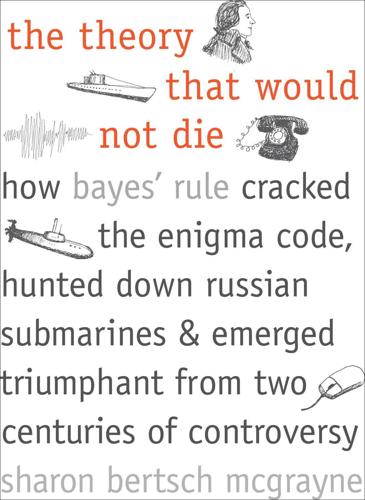
The Theory That Would Not Die: How Bayes' Rule Cracked the Enigma Code, Hunted Down Russian Submarines, and Emerged Triumphant From Two Centuries of Controversy
by
Sharon Bertsch McGrayne
Published 16 May 2011
The method figured prominently in three Nobel Prizes awarded for theoretical economics, in 1990, 1994, and 2004. The first Nobel involved the Italian Bayesian de Finetti, who anticipated the Nobel Prize–winning work of Harry Markowitz by more than a decade. Mathematical game theorists John C. Harsanyi and John Nash (the latter the subject of a book and movie, A Beautiful Mind) shared a Bayesian Nobel in 1994. Harsanyi often used Bayes to study competitive situations where people have incomplete or uncertain information about each other or about the rules. Harsanyi also showed that Nash’s equilibrium for games with incomplete or imperfect information was a form of Bayes’ rule.
…
See economics First World War, 39–40, 62 Fisher, Ronald Aylmer: cancer and, 112–13, 116 equal probabilities and, 133–34 fiducial probability and, 132, 133 frequentism and, generally, 45, 46–48, 49–51, 53–54, 234 at Graduate School, 110 on impossibility, 121 influence of, 87–88, 92, 94, 141, 147, 178 intuition and, 101 Jeffreys and, 55–58 likelihood principle of, 47, 53, 92, 233 Lindley and, 133 Neyman and, 98–99 nuclear weapons and, 121 priors and, 129 Second World War and, 64 Tukey and, 169–70 fisheries, 209, 230–31 Fleming, Ian, 70–71 Flowers, Thomas H., 81, 82 Food and Drug Administration, 228–29 forensic science, 235–36 Fox, Robert, 35 Franco, Francisco, 190, 194 French Revolution, 29, 35–36 frequentism: Bayes’ rule accepted in, 233–34 Bayes’ rule compared empirically, 157–58, 159–61 business and, 141, 142 change points and, 216–17 computation and, 214, 225 Cornfield and, 116–17 decision theory and, 236 dimensionality and, 214 expert opinion and, 179 The Federalist papers and, 157–58, 159–61 genetic science and, 47–48 hypotheses and, 116–17, 142, 217, 234 image analysis and, 219 insurance and, 92, 94 likelihood principle and, 132, 233 Lindley’s Paradox and, 132–33 military and, 241 movies and, 178 nuclear weapons and, 123 philosophy and, 253–54 practical applications and, generally, 209 priors and, 104, 177 probability and, 36, 50, 55–57, 99, 130, 142, 145–46, 156, 170 social science and, 217 statistics and, 47–48, 87–88, 98–99, 104–5, 142, 214, 234, 253 Stein’s Paradox and, 131–32 subjectivity and, 104, 129 Tukey and, 169–70 uncertainty and, 55–57, 142 unified approach and, 170 Friedman, Milton, 102, 159, 235 Fuchs, Klaus, 85 gambling: astronomy and, 36 Bayes’ rule and, 11 beliefs and, 51–52 game theory, 236 at Harvard Business School, 148 Laplace and, 19, 20, 21, 32 probability and, 6, 9, 51–52 statistics and, 106–7 subjectivity and, 185 game theory, 236. See also gambling Gastwirth, Joseph L., 227 Gates, Bill, 242 Gauss, C. F., 102 Gelfand, Alan E., 220–22, 224–25 Geman, Donald, 218–19, 221 Geman, Stuart, 218–19, 221, 251 gender, x, 24–27 generating functions, 25 genetic science, xi, 45–48, 225, 235–36, 238–40 Gerrodette, Timothy, 230 Gibbs, Josiah Willard, 219 Gibbs sampling, 218–19, 221, 225–26 Gilbert, Edgar N., 169 Gillispie, Charles Coulston, 35 Gini, Corrado, 52 Gleason, Andrew, 83 God: Bayes’ rule and, ix, 10, 11, 253–54 cause-and-effect and, 5–6 evil and, 4 existence of, 177, 235 happiness and, 4 natural law and, 6, 30 probability and, 19–20.
…
It was becoming the only mathematics of uncertainty with an explicit, powerful, and secure foundation in logic. How to apply it, though, remained a controversial question. Lindley’s enormous influence as a teacher and organizer bore fruit in the generation to come, while Savage’s book spread Bayesian methods to the military and to business, history, game theory, psychology, and beyond. Although Savage wrote about rabbit ears and neon light in beer, he personally encouraged researchers who would apply Bayes’ rule to life-and-death problems. 8. jerome cornfield, lung cancer, and heart attacks Bayes came to medical research through the efforts of a single scientist, Jerome Cornfield, whose only degree was a B.A. in history and who relied on the rule to identify the causes of lung cancer and heart attacks.
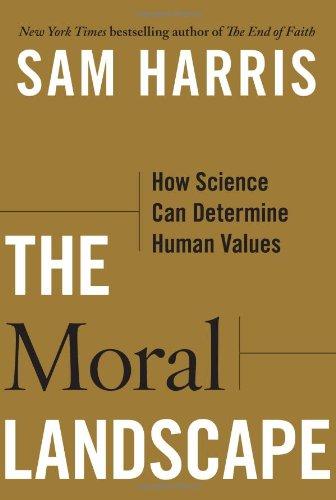
The Moral Landscape: How Science Can Determine Human Values
by
Sam Harris
Published 5 Oct 2010
We can say that a psychopath like Ted Bundy takes satisfaction in the wrong things, because living a life purposed toward raping and killing women does not allow for deeper and more generalizable forms of human flourishing. Compare Bundy’s deficits to those of a delusional physicist who finds meaningful patterns and mathematical significance in the wrong places. The mathematician John Nash, while suffering the symptoms of his schizophrenia, seems a good example: his “Eureka!” detectors were poorly calibrated; he saw meaningful patterns where his peers would not—and these patterns were a very poor guide to the proper goals of science (i.e., understanding the physical world). Is there any doubt that Ted Bundy’s “Yes!
…
For the purposes of this discussion, however, it seems sufficient to point out that we are beginning to understand the kinds of brain pathologies that lead to the most extreme forms of human evil. And just as some people have obvious moral deficits, others must possess moral talent, moral expertise, and even moral genius. As with any human ability, these gradations must be expressed at the level of the brain. Game theory suggests that evolution probably selected for two stable orientations toward human cooperation: tit for tat (often called “strong reciprocity”) and permanent defection.91 Tit for tat is generally what we see throughout society: you show me some kindness, and I am eager to return the favor; you do something rude or injurious, and the temptation to respond in kind becomes difficult to resist.
…
But consider how permanent defection would appear at the level of human relationships: the defector would probably engage in continuous cheating and manipulation, sham moralistic aggression (to provoke guilt and altruism in others), and strategic mimicry of positive social emotions like sympathy (as well as of negative emotions like guilt). This begins to sound like garden-variety psychopathy. The existence of psychopaths, while otherwise quite mysterious, would seem to be predicted by game theory. And yet, the psychopath who lives his entire life in a tiny village must be at a terrible disadvantage. The stability of permanent defection as a strategy would require that a defector be able to find people to fleece who are not yet aware of his terrible reputation. Needless to say, the growth of cities has made this way of life far more practicable than it has ever been.

Culture and Prosperity: The Truth About Markets - Why Some Nations Are Rich but Most Remain Poor
by
John Kay
Published 24 May 2004
After making fundamental contributions to mathematics and quantum physics, he turned his attention briefly to economics, which he found "a million miles away from an advanced science." 20 Von Neumann became head of the U.S. Atomic Energy Commission-and the inspiration for Dr. Strangelove-before dying at the age of fifty-three. John Nash was author of the principal solution concept in game theory-the Nash equilibrium-but his productive career was ended by schizophrenia. His health partially restored, he was awarded the Nobel Prize in 1994. 21 Nash was played by Russell Crowe in an Oscar-winning film of his life, A Beautiful Mind. Institutional (or transactions cost) economics regards as its founder Ronald Coase,n a British economist who spent most of his career at the University of Chicago.
…
If Part III of the book was mostly concerned with these anonymous interactions, Part IV describes how the working of markets differs when these interactions are not anonymous. Game theory established mathematical Culture and Prosperity {205} tools for discussing strategic interrelationships in small groups and is essential for this analysis. 18 Game theory has a popular appeal that fixed-point theorems will never achieve. This is partly the product of larger-than-life examples. The Prisoner's Dilemma, the most preposterous but the best known of all contributions to game theory, will appear in chapter 21. Game theory's characters are also larger-than-life. Von Neumann, born in Hungary, was one of the geniuses of his age. 19 At eighteen he was studying for three different degrees in different subjects at different universities in different countries.
…
The Arrow-Debreu results are the culmination of a long tradition in economics that emphasizes supply and demand, perfectly competitive markets, and the search for market equilibrium, conducted by independent, self-regarding agents. Economic research since Arrow and Debreu has drawn game theory, transactions costs, and most recently behavioral economics into the mainstream of economic theory. In the Arrow-Debreu framework, interactions are anonymous and every market has many buyers and sellers. In game theory, the players are few and not anonymous. In the Arrow-Debreu framework, institutions do not exist or are dealt with in a reductionist way. Institutional, or transactions costs, economics recognizes that economic lives are lived in and through economic institutions.
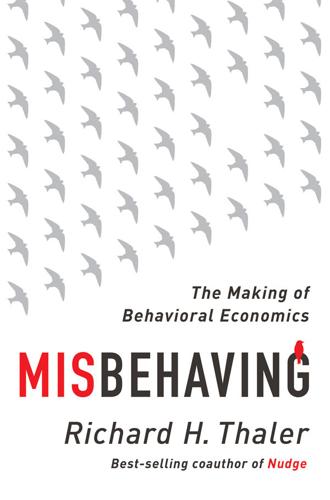
Misbehaving: The Making of Behavioral Economics
by
Richard H. Thaler
Published 10 May 2015
A third level thinker: “Most players will discern how the game works and will figure that most people will guess 33. As a result they will guess 22, so I will guess 15.” Of course, there is no convenient place to get off this train of thinking. Do you want to change your guess? Here is another question for you: What is the Nash equilibrium for this scenario? Named for John Nash, the subject of the popular book (and biopic) A Beautiful Mind, the Nash equilibrium in this game is a number that if everyone guessed it, no one would want to change their guess. And the only Nash equilibrium in this game is zero. To see why, suppose everyone guessed 3. Then the average guess would be 3 and you would want to guess two-thirds of that, or 2.
…
At that point he had picked up an MBA and was nearly done with a PhD from the University of Chicago, and he had not yet turned twenty-one. Colin has made many important contributions to behavioral economics. Two stand out. First, he more or less invented the field of behavioral game theory, the study of how people actually play games, as opposed to standard game theory, which studies how Econs would play games if they knew that everyone else playing was also an Econ. More recently, he has been at the forefront of neuro-economics, which uses techniques such as brain imaging to learn more about how people make decisions.
…
Chapter 18: Anomalies 169 The Structure of Scientific Revolutions: Kuhn (1962). 174 the first two columns: Thaler (1987a, 1987b). 174 A burst of papers: Rozeff and Kinney (1976). 174 Another anomaly came from bettors at the racetrack: Thaler (1992). Chapter 19: Forming a Team 176 game theory in the 1940s: The catalyst was arguably von Neumann and Morgenstern (1947), the first edition of which was published in 1944. 176 the field of behavioral game theory: Camerer (2003). 180 Stanley Schachter: Schachter et al. (1985a, 1985b), Hood et al. (1985). 180 generating new psychology of our own: An exception is the research associated with Sendhil Mullainathan and Eldar Shafir’s (2013) book Scarcity, one of those rare collaborations between an economist and a psychologist. 182 paper by Fehr that captured our attention: Fehr, Kirchsteiger, and Riedl (1993). 182 employment contracts could be viewed partially as a gift exchange: Akerlof (1982). 182 Rabin’s model: Rabin (1993). 20: Narrow Framing on the Upper East Side 186 bold forecasts and timid choices: Kahneman and Lovallo (1993). 186 described . . . in Thinking, Fast and Slow: Kahneman (2011), ch. 22. 189 benefits are demonstrably large: Mullainathan (2013), Baicker, Mullainathan, and Schwartzstein (2013). 191 equity premium puzzle: Mehra and Prescott (1985). 192 six years to get the paper published: Rajnish Mehra told me this. 192 none of the explanations had proven to be completely satisfactory: Mehra (2007). 194 words with one syllable: Samuelson (1979), p. 306. 194 “Risk and Uncertainty: A Fallacy of Large Numbers”: Samuelson (1963). 195 “myopic loss aversion”: Benartzi and Thaler (1995). 195 The only way you can ever take 100 attractive bets: Barberis, Huang and Santos (2001) formalize this intuition in a dynamic model. 195 experiment using recently hired non-faculty employees: Benartzi and Thaler (1999). 197 Quarterly Journal of Economics dedicated to Amos’s memory: Thaler et al. (1997). 198 A paper by . . .
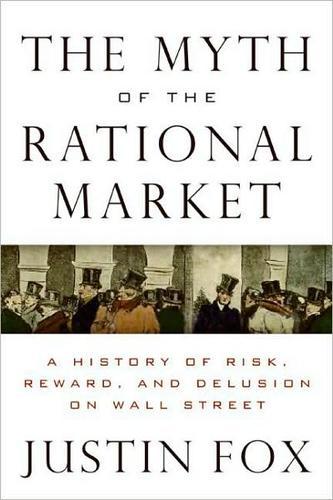
The Myth of the Rational Market: A History of Risk, Reward, and Delusion on Wall Street
by
Justin Fox
Published 29 May 2009
Monissen, The Economics of Irving Fisher: Reviewing the Scientific Work of a Great Economist (Cheltenham, UK, Northampton, Mass.: Edward Elgar, 1999), 6. 5. E. Roy Weintraub, “On the Existence of Competitive Equilibrium: 1930–1954,” Journal of Economic Literature (March 1983): 13. 6. It was left to others, such as John Nash of A Beautiful Mind fame, to develop a multiplayer theory of games better suited to modeling economic interactions. 7. John von Neumann and Oskar Morgenstern, Theory of Games and Economic Behavior, 65th Anniversary Edition (Princeton: Princeton University Press, 2004), 177–78. 8. Daniel Bernoulli, “Exposition of a New Theory on the Measurement of Risk,” Econometrica (Jan. 1954): 23–36. 9.
…
The result was the 641-page Theory of Games and Economic Behavior, coauthored by von Neumann and Morgenstern and published in 1944. As far as pure game theory went, the book added little to what von Neumann had written in 1928,6 although it gave form and heft to von Neumann’s big idea. It also solved the quandary faced by poor Sherlock Holmes and Dr. Moriarty. According to von Neumann’s calculations, Holmes should choose randomly with a 60 percent probability of getting off at the intermediate station, while Moriarty should pick with a 60 percent probability of proceeding straight to Dover.7 Got that? For economists, the part of the book that made the biggest immediate impression was not game theory itself but the chapter outlining how one should weigh potential outcomes before deciding on a move.
…
At Cowles, he gathered around him a spectacular assemblage of future Nobel winners (“I pick people with good eyes,” he explained9) who together explored the cutting edge of mathematical economics. Von Neumann and Morgenstern’s book was on that cutting edge, and Marschak brought von Neumann to Chicago for a two-day seminar on game theory in 1945. Soon afterward, he wrote an article translating von Neumann and Morgenstern’s concept of expected utility into language that would be understood by his fellow economists. “To be an ‘economic man,’” Marschak summed up, “implies being a ‘statistical man.’”10 IF EVER THERE WAS A statistical man, it was Harry Markowitz.
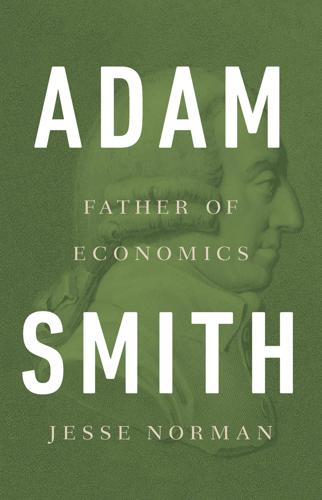
Adam Smith: Father of Economics
by
Jesse Norman
Published 30 Jun 2018
The ingenuity of Edgeworth’s approach was that it plausibly related much more realistic descriptions of how people actually bargain to the mathematically idealized outcomes of perfect competition—it was in this sense more Smithian than Walrasian. Ignored for decades, his ideas were rediscovered and reinvigorated with the work of John Nash and others in the second half of the twentieth century, when they gave rise to important work in the theory of cooperative and non-cooperative games. Game theory was yet another example of mathematics being incorporated into economics. But the core concept of man as a rational economic agent, homo economicus, lay at the centre of all this work; and as economics grew more mathematical, so the idea of homo economicus became progressively narrower.
…
It provides a psychologically plausible account of a core norm of fairness, of ‘putting oneself in another’s shoes’ and seeing things from their perspective—the kind of norm that underlies, for example, the well-known theory of justice developed by the philosopher John Rawls. Overall, the use of game theory enables the idea of norms to be integrated into the equilibrium models beloved of economists. But this is also its weakness, for as a purely formal treatment it operates at a single moment or repeated succession of moments in time. It thus misses the continuous, energetic and ever-changing understanding of human interaction to be found in Smith. As game theory reminds us, far from being irrelevant or subordinate to economics and commercial activity, norms bear directly upon them.
…
These include the work of Frans de Waal and others on norms of reciprocity in primates; of Joe Henrich and others on the evolutionary selection of social norms in different populations; and of Giacomo Rizzolatti and others on the activity of ‘mirror neurons’—neurons that fire both when a monkey or human performs an action and when they see another monkey or human doing a similar action. Some people have seen a potential grounding in neuroscience for Smith’s idea of ‘sympathy’. Perhaps most striking of all is the degree to which game theory has developed and illuminated ideas to be found in Hume and Smith. From this perspective, norms are a central mechanism by which people come to coordinated solutions to social problems. These solutions can often be formally modelled as ‘Nash equilibria’—that is, as stable states of affairs in which each participant knows the strategies of the others and cannot improve their own strategy as a result.

Nerds on Wall Street: Math, Machines and Wired Markets
by
David J. Leinweber
Published 31 Dec 2008
Source: Robert Almgren and Neil Chriss, “Optimal Execution of Portfolio Transactions,” Journal of Risk 3, no. 2 (Winter 2000/2001). 10 Share Holdings 8 C B 6 4 A 2 0 0 1 2 3 Time Periods 77 4 5 Mathematical models of markets can become very elaborate. Game theoretic approaches to other market participants, human and machine, in the spirit of the Beautiful Mind ideas of John Nash, bring another level of insight. Known Unknowns and Unknown Unknowns Almgren and Chriss close with an important point about the limitations of all model-driven strategies. As part of the Algos 201 track, here is what they say about connecting algorithms to real-world events: Finally, we note that any optimal execution strategy is vulnerable to unanticipated events.
…
Markowitz and Sharpe, in particular, pioneered the ideas of balancing risk and reward in a systematic way, which when applied to finance, eventually led to their sharing the Nobel Prize in 1990. To digress just a bit, RAND’s interest in systematically approaching risk and reward, optimization, decision under uncertainty, and game theory was not initially conceived in the context of finance. RAND was motivated by the challenges of World War II and the Cold War.Think of the types of problems faced by the Army Air Corps, predecessor of the modern U.S. Air Force, in World War I. Military aviation involved flying small planes to take a look at the situation on the ground, occasionally encountering someone doing the same thing for the other side.
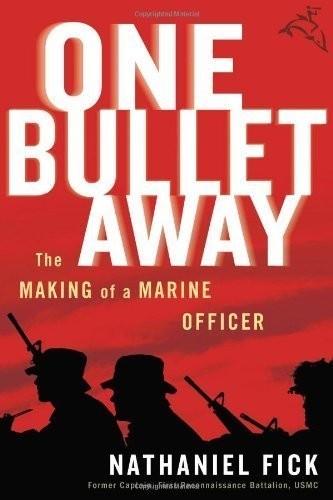
One Bullet Away: The Making of a Marine Officer by Fick, Nathaniel C.(October 3, 2005) Hardcover
by
Nathaniel C. Fick
Published 14 Apr 2006
I thank my parents, Niel and Jane, and my sisters, Maureen and Stephanie, for their boundless love and support. In worrying, mailing cookies, and listening, they also served. My fellow platoon commanders were, and are, comrades in the truest sense. Thank you to Patrick English, Vijay George, Ed Hinman, Ty Moore, Walt Messick, Brendan Sullivan, John Nash, and Jim Beal. My former commanding officer Rich Whitmer taught me more than he will ever acknowledge. Thank you, Oden Six. To Keith Marine, I can only say “Dang.” I am forever grateful to Mike Wynn, Brad Colbert, Shawn Patrick, Rudy Reyes, Steve Lovell, Tony Espera, Tim Bryan, Mike Stinetorf, Hector Leon, Gabe Garza, Evan Stafford, Anthony “Manimal” Jacks, Walt Hasser, Nathan Christopher, James Chaffin, Harold Trombley, Teren “T” Holsey, John Christeson, Michael Brunmeier, Jason Lilley, Josh Person, Leandro “Shady” Baptista, Eric Kocher, Dan Redman, and A.
…
Not yelled commands in mid-assault, but multipage written orders built around the five-paragraph format called SMEAC: situation, mission, execution, administration and logistics, command and signal. We wrote dozens of them. Instruction at TBS goes far beyond rote memorization, growing into some amalgamation of chess, history, boxing, and game theory. We studied the fog and friction of war, how the simplest things become difficult. During our written test on the subject, the instructors cranked Metallica at full volume, hurled tennis balls at our heads, and sprayed our faces with water pistols. The lesson was focus: ignore the distractions and do your job.
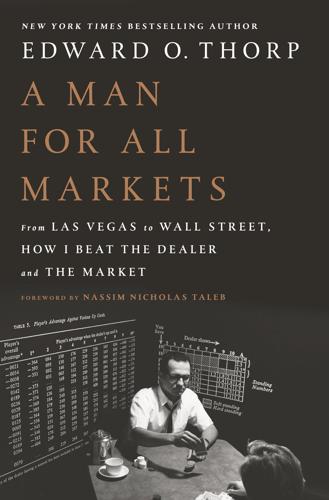
A Man for All Markets
by
Edward O. Thorp
Published 15 Nov 2016
MIT had become one of the world’s great mathematics centers, following its transformation by projects for the government during World War II from a technical school to a scientific powerhouse. Simply walking down the hall, I would chat with people like the prodigy Professor Norbert Wiener (cybernetics) and the future Abel Prize winner Isadore Singer. The C. L. E. Moore Instructorship program, of which I was part, had brought in new PhDs like John Nash, who later won the Nobel for economics, and future Fields Medal winner Paul Cohen. Though there’s no Nobel Prize for mathematics, the Fields and the Abel prizes have that status. Cohen had left a few days before I arrived; his name was just being scraped off his door. I finally decided not to stay on.
…
Based on his work, he launched the first market-neutral hedge fund in 1969. Dr. Thorp, with Claude Shannon, also invented the first wearable computer in 1961 to win at roulette. He has also written Elementary Probability (1966), The Mathematics of Gambling (1984), and numerous mathematical papers on probability, game theory, and functional analysis. He completed undergraduate and graduate work at UCLA, receiving the BA and MA in physics, and the PhD in mathematics in 1958. He has taught at UCLA, MIT, and New Mexico State University, and was Professor of Mathematics and Finance at the University of California, Irvine.
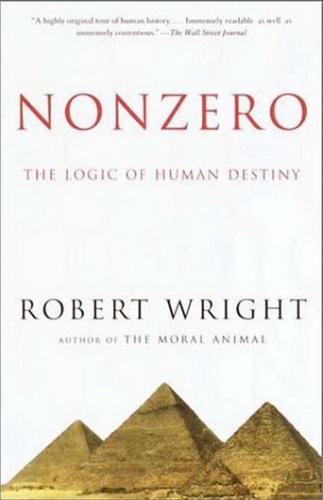
The Moral Animal: Evolutionary Psychology and Everyday Life
by
Robert Wright
Published 1 Jan 1994
Apparently there are some kinds of non-zero-sum games that people just won’t play.† And this pride is found cross culturally; experiments in Japan, Slovenia, the United States, and Israel yield the same basic results. To say that people naturally resist extremely raw deals isn’t, of course, to say that raw deals don’t happen. In 1994, the game theorist John Nash won the Nobel Prize for, among other things, rigorously exploring how various circumstances could weaken one’s bargaining position, so that “logical” outcomes of non-zero-sum games may not be what most of us would call fair. Thus, when people of different income levels bargain over how to divide the benefits of their joint and equal labors, the richer person is in a stronger position; the player who needs the money less can more credibly threaten to drop out of the game altogether.† In chiefdoms, the commoners’ bargaining disadvantage went beyond their low incomes.
…
But I did liberally pepper the book with the term—and with such allied terms as “non-zero-sum” and “negative sum,” and so on. What’s more, I did title the book “Nonzero.” Why am I so attached to the terminology of game theory? Does it really add anything to more familiar words? Can’t we just say, for example, that zero-sum games are competitive and non-zero-sum games are cooperative? There are several reasons that I think the answer is no—that there’s no substitute for game theory as a way of looking at the history of our species. For starters, there are a number of cases in which people comply with non-zero-sum logic, and yet “cooperate” is a misleading word.
…
And it seemed to me that, if I wanted a vocabulary that would apply not just to people, but to genes, then it was better to minimize the use of fuzzy terms like “cooperate” and stick mainly with cold, precise terms such as “non-zero-sum.” (A particular appeal of using game theory in biology is that in Darwinian theory the “payoff” is clearly and quantitatively defined—as genetic proliferation; so actually adding up the nonzero sums is in theory doable without making artificial assumptions.) The terminology of game theory helps unify not just human history and organic history. Within each of these realms, the terminology can be unifying. If you ask what is common to reciprocal altruism and kin selection (two basic biological routes to social integration), the answer is non-zero-sum logic.
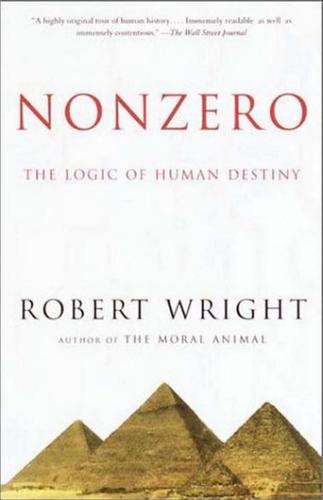
Nonzero: The Logic of Human Destiny
by
Robert Wright
Published 28 Dec 2010
Apparently there are some kinds of non-zero-sum games that people just won’t play.† And this pride is found cross culturally; experiments in Japan, Slovenia, the United States, and Israel yield the same basic results. To say that people naturally resist extremely raw deals isn’t, of course, to say that raw deals don’t happen. In 1994, the game theorist John Nash won the Nobel Prize for, among other things, rigorously exploring how various circumstances could weaken one’s bargaining position, so that “logical” outcomes of non-zero-sum games may not be what most of us would call fair. Thus, when people of different income levels bargain over how to divide the benefits of their joint and equal labors, the richer person is in a stronger position; the player who needs the money less can more credibly threaten to drop out of the game altogether.† In chiefdoms, the commoners’ bargaining disadvantage went beyond their low incomes.
…
But I did liberally pepper the book with the term—and with such allied terms as “non-zero-sum” and “negative sum,” and so on. What’s more, I did title the book “Nonzero.” Why am I so attached to the terminology of game theory? Does it really add anything to more familiar words? Can’t we just say, for example, that zero-sum games are competitive and non-zero-sum games are cooperative? There are several reasons that I think the answer is no—that there’s no substitute for game theory as a way of looking at the history of our species. For starters, there are a number of cases in which people comply with non-zero-sum logic, and yet “cooperate” is a misleading word.
…
And it seemed to me that, if I wanted a vocabulary that would apply not just to people, but to genes, then it was better to minimize the use of fuzzy terms like “cooperate” and stick mainly with cold, precise terms such as “non-zero-sum.” (A particular appeal of using game theory in biology is that in Darwinian theory the “payoff” is clearly and quantitatively defined—as genetic proliferation; so actually adding up the nonzero sums is in theory doable without making artificial assumptions.) The terminology of game theory helps unify not just human history and organic history. Within each of these realms, the terminology can be unifying. If you ask what is common to reciprocal altruism and kin selection (two basic biological routes to social integration), the answer is non-zero-sum logic.
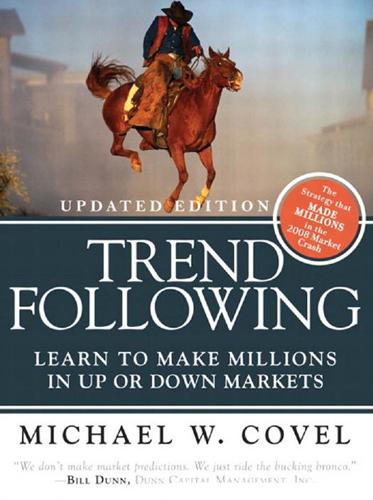
Trend Following: How Great Traders Make Millions in Up or Down Markets
by
Michael W. Covel
Published 19 Mar 2007
Now, suppose the payoff was changed to 3/2, a gain of $1.50 in addition to a $1 bet—the expectation would change to: (.5) (1.5) + (.5) (–1) = +.25 Playing this game 100 times would give us a positive expectation of .25.8 This is the kind of edge cultivated and honed daily by trend followers. You might ask, “If everyone knows about expectation, how can I ever find my edge?” Think about it this way. Consider a scene from the movie A Beautiful Mind, the biography of mathematician John Nash. Nash and some of his mathematician buddies are in a bar when a sexy blonde and four brunettes walk in. After they admire the new arrivals, Nash and his friends decide to compete for the blonde. However, Nash has reservations, correctly observing that, if everyone goes for the same woman, they will just end up blocking each other out.
…
Such periods, however, can also present them with opportunities for great profits.9 252 Trend Following (Updated Edition): Learn to Make Millions in Up or Down Markets only way for everyone to succeed is to ignore the blonde and hit on the brunettes. The scene dramatizes the Nash Equilibrium, his most important contribution to game theory. Nash proved that in any competitive situation—war, chess, even picking up a date at a bar—if the participants are rational and they know that their opponents are rational, there is only one optimal strategy. That theory won Nash a Nobel Prize in economics and transformed the way we think about competition in both games and the real world.10 Building off Nash’s general thoughts, Ed Seykota lays out a basic risk definition from a trading perspective: “Risk is the possibility of loss.”
…
, 273-274 fashion metaphor, 50 fat tails, 228 Faulkner, Charles, 3, 15, 21, 28, 33, 66, 193-194, 197-198, 201-203, 206-208, 214, 223, 253, 282, 299-302 Fawcett, George, 273 Federal Reserve announcements, reaction to, 56-57 Feinstein, Diane, 146 Feynman, Richard, 16 “fight-or-flight” mode, 197 First Gulf War, 176-178 five-year notes trading, 130 Florida Marlins, 187 Forrester, Jay, 62-63 Fouts, Roger, 209 Franiak, Frank J., 167 Freud, Sigmund, 206, 221 Friedman, Thomas, 28, 143, 256, 267 FTSE chart (2002), trend-followers and, 141 fundamental analysis, 7-9, 177, 212 Futures and Options Expo, 72 futures exchanges, 3 Futures Magazine, xvi Galilei, Galileo, 68 Galton, Francis, 32 game theory, 251 game, trading as, 277-278 Garcia, Jerry, 243 Gardner, David, 9 Gardner, Tom, 9 Gartman, Dennis, 116 “The Gartman Letter,” 116 Gawande, Atul, 209 generalists, trend followers as, 28 German Bund chart (1998), trend-followers and, 159 Gigerenzer, Gerd, 211, 213-214, 216, 224 Gladwell, Malcolm, 158, 169 Glassman, James, 231-232, 235 gold trading, 129 Goldman Sachs, 153 Goleman, Daniel, 196, 200-201 Good to Great (Collins), xviii, 33 Goodman, Marc, 105 Gould, Stephen Jay, 189 government, market system and, 4 Graham Capital Management, 21, 147 greed and behavioral finance, 196 Greenberg, Alan “Ace”, 205 Griffin, Ken, 111 Griffith, Bill, 18 Gulf War (first), 176-178 Gunther, Max, 283 Hamer, Jim, 66 Harding, David, xv, xx, 29-32, 105, 109, 124, 182, 199, 215, 230, 281, 289, 295 Harris, Larry, 114-115, 278 Harrison, Alfred, 235 “Has Trend Following Changed?”

The Rational Optimist: How Prosperity Evolves
by
Matt Ridley
Published 17 May 2010
Polity Press. See also Eisner, M. 2001. Modernization, Self-Control and Lethal Violence. The Long-term Dynamics of European Homicide Rates in Theoretical Perspective The British Journal of Criminology 41:618-638. p. 85 ‘Greenstreet whispers to Bogart’. Siegfried, T. 2006. A Beautiful Math: John Nash, Game Theory and the Modern Quest for a Code of Nature. Joseph Henry Press. p. 86 ‘As the economist Herb Gintis puts it’. http://www.reason.com/news/show/34772.html. p. 86 ‘people in fifteen mostly small-scale tribal societies were enticed to play the Ultimatum Game’. Henrich, J. et al. 2005. ‘Economic man’ in crosscultural perspective: Behavioral experiments in 15 small-scale societies.
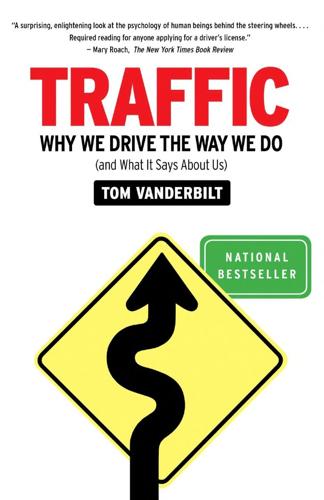
Traffic: Why We Drive the Way We Do (And What It Says About Us)
by
Tom Vanderbilt
Published 28 Jul 2008
After all, if the driver gets off the highway and goes to Sure Thing Street, he or she will not save time. The driver will save time only if others get off the highway—but why should they? The drivers are locked into what is called a Nash equilibrium, a strategic concept from the annals of Cold War thinking. Popularized by the Nobel mathematician John Nash, it describes a state in which no one player of an experimental game can make himself better off by his own action alone. If you cannot improve your situation, why move to a different road? The irony is that when everyone does what is best for him- or herself, they’re not doing what is best for everyone.
…
It is easier not to give if one does not make eye contact, which is why one sees, as in other cities, so many drivers looking rigidly ahead as they wait for the light. Your daily drive may not seem to have much to do with the strategies of the Cold War, but every time two cars approach an unmarked intersection simultaneously, or four cars sidle up to a four-way stop at about the same time, a form of game theory is being applied. Game theory, as defined by the Nobel Prize–winning economist Thomas Schelling, is the process of strategic decision making that occurs when, as in a nuclear standoff or a stop-sign showdown, “two or more individuals have choices to make, preferences regarding the outcomes, and some knowledge of the choices available to each other and of each other’s preferences.
…
Game theory, as defined by the Nobel Prize–winning economist Thomas Schelling, is the process of strategic decision making that occurs when, as in a nuclear standoff or a stop-sign showdown, “two or more individuals have choices to make, preferences regarding the outcomes, and some knowledge of the choices available to each other and of each other’s preferences. The outcome depends on the choices that both of them make, or all of them if there are more than two.” Traffic is filled with these daily moments of impromptu decision making and brinksmanship. As Schelling has argued, one of the most effective, albeit risky, strategies in game theory involves the use of an “asymmetry in communication.” One driver, like Barrios Gómez in Mexico City, makes himself “unavailable” to receive messages, and thus cannot be swayed from going first through the intersection. These sorts of tactics can be quite effective, if you feel like risking your neck to prove a bit of Cold War strategy.
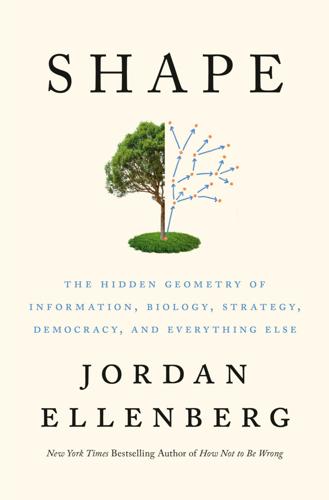
Shape: The Hidden Geometry of Information, Biology, Strategy, Democracy, and Everything Else
by
Jordan Ellenberg
Published 14 May 2021
* No, not a “sphere”; that’s the set of points at distance exactly 1 from a given point. The Earth’s surface is a sphere (okay, an ever-so-slightly oblate spheroid), but the Earth itself is a ball. The distinction is the same one we made earlier between a “circle” and a “disc.” * Who, as the hand double standing in for Russell Crowe in all the blackboard scenes in the John Nash biopic A Beautiful Mind, has a Bacon number of 2 via Ed Harris, and an Erdős number of 2 via Diaconis, whose paper with Erdős on the greatest common divisor was published eight years after Erdős’s death. That paper, in turn, is the first link in the length-4 path from Erdős to Danica McKellar. * A physicist reading this will understand this to be an oversimplification of the way modern people think about entropy.
…
T., 277 federalism, 349–50, 408n Federalist Papers, 352–53, 384–85 Federalist Party, 363 feedback, 179, 185 Feingold, Russ, 347 Fermat, Pierre de, 151–52, 154, 158 Fermat’s Last Theorem, 151, 151n Fermat’s Little Theorem, 151, 154 Ferranti, 124–25 Fibonacci sequence and carbon molecule, 318 and eigenstates, 294 and eigenvalues, 284–85 and golden ratio, 269–71, 274–78, 280–82 and irrational numbers, 271, 274–75 and Pell sequence, 282 and Pi film, 276–77 and poetic meters, 235–36 and SIR model, 238 and stock market prediction, 281–82, 281n Fields Medal, 419 finance, mathematical, 82 FiveThirtyEight website, 73 Flajolet-Martin algorithm, 335–36 “Flash Cards” (Dove), 414–15 Flatland (Abbott), 411–13, 416, 417n Flight Research Division of NASA, 3 floating voters, 365–66 fluxions, 240 formal gardens, 411 formal logic, 22–24, 26 Fourier transformations, 298 Fourteenth Amendment, 352, 408n Fourth Congressional District of Illinois, 366 fractals, 369 fractions, 251n, 271–75 Franco-Prussian War, 38–39 Franklin, Benjamin, 13n free will, 84, 87, 89 Frénicle de Bessy, Bernard, 151–52 Frisius, Gemma, 307 From Here to Eternity (film), 310 Frost, Robert, 174–75 Fukushima nuclear disaster, 233 Fuller, Everett, 98 functions, 155–56, 169 Gaddie, Keith, 345, 391 Galileo Galilei, 258 Galton, Francis, 77–78, 319 gambler’s ruin problem, 158–59, 159n games and game theory checkers, 97–99, 127, 128n, 137–39, 139–42, 152, 163, 164, 203–4 chess, 127–29, 137, 141–42, 144–45, 146, 155, 164 codes and ciphers, 129–33, 134–37 and Conway, 223–24 draw games, 125–26, 137–38, 140n Game of Life, 224, 325n Go, 139, 140, 141, 155–57, 162–64, 168, 170, 203, 259, 276, 392 modeling gaming programs, 259–60 and Nim, 100–103, 106, 110–15, 121–22, 122–28, 162–63, 223 and redistricting methods, 408 and restriction systems, 138 and stalemate rules, 127–28, 128n subtraction games, 115–17, 117–22, 144 tic-tac-toe, 125–26, 128, 137, 164 and tree diagrams, 103–10, 110–15, 125–28, 137–38, 140–43 Gardner, Martin, 325, 325n Gateway Arch, 258 Gauss, Carl Friedrich, 46, 308 GCHQ, 136 gematria, 276 gender issues in math, 16–17, 197–99, 198, 213–14, 413 Gentry, Jan, 115 geometric mean, 214–15 geometric progressions and eigenvalues, 265–66, 284–86, 290–92, 292–98 modeling spread of diseases, 214–20, 220–22, 231–34, 244, 246, 248, 255, 282–87, 284n, 300–301 and SIR model, 238 and spanning trees, 398 See also exponential growth “Geometry” (Dove), 415 Geometry No Friend to Infidelity (Jurin), 413 geometry of all geometries, 418 Geometry of Statistics (Pearson), 77 Geometry Revisited (Coxeter and Greitzer), 56 German mathematics and Analytical Society, 253 influence on the French, 38–39 and math pedagogy, 17 and Pearson’s background, 75 and Sylvester’s background, 319, 323 germ theory, 256 Geronimo, 59 Gerry, Elbridge, 5, 354, 362–63 gerrymandering current and ongoing issues, 407–10 examples of, 358–59, 361, 366 and geometry of district shapes, 366–72 and GOP map of Wisconsin, 344–48 history of, 362–66 legal battles over, 383–85, 401–7 mathematical methods applied to, 386–93, 393–400 politics of, 357–62 and proportional representation standard, 372–75, 375–78, 380, 382, 383, 385, 386, 402–5 quantifying, 375–81, 376n, 401 and representation priorities, 348–57 and statistical malfeasance, 381–83 and Wisconsin 2018 midterms, 340–44, 341 Gettysburg Address, 12 Ghana, 218 Gifted (film), 68–70, 315 Girls’ Public Day School Company, 413 Glasgow Herald, The, 75 globes, 305–10 gnomic projection, 308 Go and author’s background, 139 game-playing programs, 141, 155–57, 164, 168, 177, 203, 259 and gradient descent, 168, 170 in Pi (film), 276 and random walk theory, 155–57, 392 and space of strategies, 162–65 tree analysis of strategies, 162–65 and tree structure of games, 140–41 Goethe, Johann Wolfgang von, 75 Goffman, Casper, 311 golden ratio, 269–75, 270, 276–82, 283–85 gonorrhea, 227 Gonotsky, Samuel, 138 Google, 92, 94, 195–96, 261–63, 288–92, 330 Google PageRank, 290, 330 Google Translate, 178 Gorsuch, Neil, 384, 385, 402, 404 Gottlieb, Robin, 200 GPT-3, 95–96, 168, 185 GPU chips, 185 Grace, Mckenna, 68–69 gradient descent, 166–76, 177n, 185, 186, 262 gradient of confidence, 22–23 Grammar of Science, The (Pearson), 83 Grandjean, Burke, 98 Granville, Andrew, 201 graphic notation, 318–19 graphs and graph theory, 314–19, 333–35, 338n, 393–400 Grassi, Giovanni, 208 gravity, 238–39, 239–41, 239n great circle routes, 306 Great Easter Brood, 149–50 greedy algorithms, 172, 185 Greitzer, Samuel, 56, 58 Gresham, Thomas, 77 Gresham Professorship in Geometry, 76, 321 Griffith, Elmer Cummings, 363, 366n Grothendieck, Alexander, 421–22 group testing, 226–29 group theory, 391–92 Guam, 356 Guare, John, 333–34, 339 Gulliver, J.
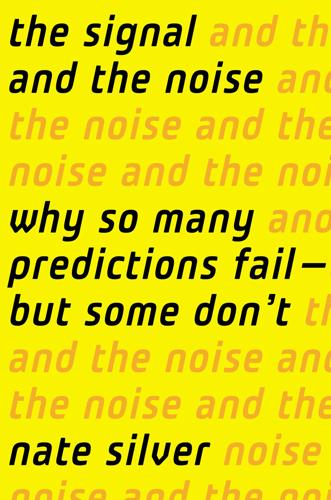
The Signal and the Noise: Why So Many Predictions Fail-But Some Don't
by
Nate Silver
Published 31 Aug 2012
Or we may simply focus on the ones that fit with bureaucratic protocol, like the doctrine that sabotage rather than an air attack was the more likely threat to Pearl Harbor. The Unfamiliar and the Improbable Rumsfeld’s favorite part of Wohlstetter’s book is the foreword, composed by the Nobel Prize–winning economist Thomas Schelling, who was instrumental in translating John Nash’s early work on game theory into national-security contexts. Schelling writes of our propensity to mistake the unfamiliar for the improbable: There is a tendency in our planning to confuse the unfamiliar with the improbable. The contingency we have not considered seriously looks strange; what looks strange is thought improbable; what is improbable need not be considered seriously.
…
“Positions that are good for computers are complex positions with lots of pieces on the board so there’s lots of legal moves available,” Campbell told me. “We want the positions where tactics are more important than strategy. So you can do some minor things to encourage that.” In this sense, Deep Blue was more “human” than any chess computer before or since. Although game theory does not come into play in chess to the same degree it does in games of incomplete information like poker, the opening sequences are one potential exception. Making a slightly inferior move to throw your opponent off-balance can undermine months of his preparation time—or months of yours if he knows the right response to it.
…
.: of 1892, 334 of 1988, 67 of 2000, 11, 67, 68, 468–69 of 2008, 19, 48–49, 55, 56, 59, 60, 252, 426, 468 of 2010, 57–58, 61, 64 of 2012, 59, 65, 333, 336 electrical engineering, 173 Elements of Poker (Angelo), 325 Elias Baseball Analyst, 77 Ellsbury, Jacoby, 101 El Niño-Southern Oscillation (ENSO) cycle, 392, 393, 401, 403 Emanuel, Kerry, 384–85, 387 Emanuel, Rahm, 48 English Civil War, 4 Enlightenment, 2, 112 Enron, 356 entitlement, sense of, 326 epidemiology, 204–31 basic reproduction number in, 214–15, 215, 224, 225 extrapolation in, 212–16 self-canceling predictions in, 219–20 self-fulfilling predictions in, 217–18 SIR model in, 220–21, 221, 223, 225, 389 equity holdings, 357 equity premium puzzle, 349n ERA, 91, 95 ESPN, 294–95, 308 “Essay Toward Solving a Problem in the Doctrine of Chances,” 241 Estonia, 50–51, 52 ethnography, 228 European debt crisis, 198 European Union, 397–98 evacuations, 126–27 evolution, 292 EVTMX (Eaton Vance Dividend Builder A), 339–40 experience, 57, 312 Expert Political Judgment (Tetlock), 52 experts, 14, 52–53 definition of, 467 demand for, 202 extrapolation, 212–16 eyesight, 123, 124 FAA, 423 Fair, Ray C., 482 false negatives, 372 false positives, 245, 249–50, 251, 253 falsifiability, 14–15, 452 Fama, Eugene, 337–38, 339–40, 341, 346, 347, 353, 362, 363, 368n, 497 Fannie Mae, 33 fashion, 217 fatalism, 5 fate: American belief in control of, 10 in Julius Caesar, 4–5, 10 fat tails, 368, 496 fault lines, 162 favorite-longshot bias, 497 fear, vs. greed, 38 Federal Elections Commission, 69 Federal Open Markets Committee, 190–91 Federal Reserve, 37, 188 Federal Reserve Bank of Boston, 198 Federal Reserve Bank of New York, 465 Federal Reserve Bank of Philadelphia, 179 feedback: in climate system, 133 in economic forecasts, 188, 195 negative, 38, 39 positive, 38, 39, 368 on weather forecasting, 134–35, 386 FEMA, 141 Fenway Park, 79 Fesenko, Kyrylo, 238 Fine, Reuben, 272 First Amendment, 380 fiscal policy, 42, 186n Fischer, Bobby, 286–88, 287, 443 fish, in poker, 312, 316, 317–19 Fisher, Ronald Aylmer, 251–52, 254, 256–57, 259, 260 Fitch Ratings, 19, 24 FiveThirtyEight, 9, 48, 59, 61, 62, 62, 65, 67, 69, 314, 320, 468, 497 Intrade vs., 334, 335, 336–37 Five Tools, 95–96 Fleming, Alexander, 119 Flip That House, 32 Flip This House, 32 Floehr, Eric, 131, 132, 133–34, 474 flood prediction, 177–79, 178 floods, 145, 177–79, 178 flop, in poker, 299, 303, 303, 304, 305, 306, 310 Florida, 108 flu, 204–5 A/Victoria, 205–6, 208 bird, 209, 216, 229 H1N1, see H1N1 H3N2, 216 news about, 230 1957 outbreak of, 229 1968 outbreak of, 229 Spanish, 205, 211, 214, 224, 229 vaccine for, 206–8, 483–84 fluid dynamics, 118 football, 80n, 92–93, 185–86, 336 Ford, Gerald, 206, 208, 229 Ford, Henry, 212 forecasting: in baseball, 72–73, 76–77, 82–84, 93, 99–103; see also PECOTA; scouts in chess, 271, 289 by computer, 289 of earthquakes, see earthquake forecasting as planning and decision making under uncertainty, 5, 267 predictions vs., 5, 149 progress and, 5 updating of, 73 forecasting, global warming, 380–82 complexity in, 382 consensus in, 382–84 uncertainty in, 382 ForecastWatch.com, 132 foreshocks, 144, 154, 155–57, 476 Fort Dix, 204, 206, 208, 223–25, 229 Fort Riley, 205 fortune-telling, 5 Fourier, Joseph, 375 foxes, 53–54, 54, 55, 73 consensus process emulated by, 67 improvements in predictions by, 57, 68 as television pundits, 56 Fox News, 51n, 55, 56 France, 120 Franklin, Benjamin, 262 Freakonomics (Levitt and Dubner), 9 Freakonomics blog, 136–37, 334 FRED, 225–26 Freddie Mac, 33 free agents, 82, 90, 94, 99 free markets, 1, 128, 332, 369, 370, 451, 496–97 free will, 112 see also determinism French Wars of Religion, 4 frequentism, 252–53, 254, 259, 260 Freud, Sigmund, 53 Friedel, Frederic, 278–79, 282–83 Fritz, 278, 282n Frontline, 370n Fukushima nuclear reactor, 11, 168 Full Tilt Poker, 309 fundamental analysis, 341, 348, 354 fundamentals-based models, in elections forecasting, 68 futarchy, 201 Future Shock (Toffler), 12, 13 Galfond, Phil, 309 Galileo, 4, 254 Gallup polls, 364–65, 497 gambling, 232–61, 238 on baseball, 286 Bayesian philosophy’s esteem for, 255–56, 362 over-under line, 239–40, 257, 286 point spread, 239 Game Change, 59 Game of the Century, 286–88, 287 game theory, 284–85, 311, 419 Gates, Bill, 264 Gates, H. L. “Skip,” 417n GDP, 482 forecasting of, 180, 181–83, 182, 186n, 190, 194, 198, 199, 200–201, 202–3 growth in, vs. job growth, 189 Gehringer, Charlie, 84, 85 German Peasants’ War, 4 Germany, 2, 115, 120, 210 Germany, East, 52 Giambi, Jason, 99 GIGO (garbage in, garbage out), 289 GISS temperature record, 393–95 Giuliani, Giampaolo, 143, 144–45, 146, 476 Gladwell, Malcolm, 53 global cooling, 399–400 global financial crisis, 11, 16, 20, 30–36, 39–43, 118–19, 329 failure to predict, 181, 327 global population, growth of, 212 global warming, 13 causality and, 372–73 Climategate and, 408 contrarianism and, 380 Copenhagen conference on, 378–80 IPCC report on, see International Panel on Climate Change (IPCC) predictions of, 373–76, 393, 397–99, 401–6, 402, 507 self-interest and, 380 skepticism of, 377, 380, 383, 384–85 use of term, 376, 377n Goldman Sachs, 24n, 184–85, 199, 364 gonorrhea, 222 Goodhart’s law, 188 Google, 264, 290–92 creative culture at, 291 Google searches, 200, 290–91 Gorbachev, Mikhail, 50, 51, 52, 160 Gore, Al, 11, 67, 68, 381–82, 381, 385, 403, 514, 469 government spending, 42, 186n GPS, 174–75, 219 Graham, Benjamin, 364 Grand Forks, N.
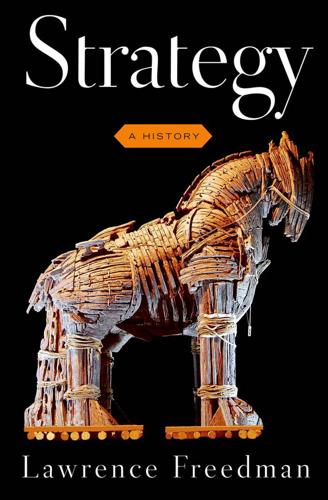
Strategy: A History
by
Lawrence Freedman
Published 31 Oct 2013
In a 1949 article, Brodie referred to game theory in a footnote as a source of “mathematical systematization,” adding that “for various reasons” he did not share the authors’ “conviction that their theory could be directly and profitably applied to problems of military strategy.”15 Later, while finding its “refinements” of little use, he acknowledged the value of the “constant reminder that in war we shall be dealing with an opponent who will react to our moves and to whom we must react.”16 Few of the books on nuclear strategy made much, if any, mention of game theory. This absence was notable in a book by one of the founders of game theory, Oskar Morgenstern.17 Bruce-Briggs suggests that the close association between nuclear strategy and game theory was a consequence of the reception of Kahn’s On Thermonuclear War. Although Kahn had used neither game theory nor mathematics, he was accused of being the most extreme example of a game-theory-wielding militarist, a moniker implying great technical capacity but no moral sensibility. Schelling was also included in this category.18 Schelling observed at the time, “I don’t see that game theory is any more involved than Latin grammar or geophysics; but its quaint name makes mysterious and patronizing references to it an effective ploy.”19 Schelling had little background in military issues.
…
He shared the view, growing among the operational research community, that advanced mathematics and abstract models were making their work less accessible to potential users,12 and he always opposed the suggestion that strategy was or should be “a branch of mathematics.”13 He confessed to having learned more “from reading ancient Greek history and by looking at salesmanship than studying game theory.” The greatest achievement of game theory, as far as he was concerned, was the payoff matrix. It was extraordinarily useful to be able to put together in a matrix a “simple situation involving as few as two people and two choices.”14 His equivocation on game theory was not unique. Other nuclear strategists who worked at RAND during the 1950s tended to talk of following the “spirit” of game theory rather than its rules. In a 1949 article, Brodie referred to game theory in a footnote as a source of “mathematical systematization,” adding that “for various reasons” he did not share the authors’ “conviction that their theory could be directly and profitably applied to problems of military strategy.”15 Later, while finding its “refinements” of little use, he acknowledged the value of the “constant reminder that in war we shall be dealing with an opponent who will react to our moves and to whom we must react.”16 Few of the books on nuclear strategy made much, if any, mention of game theory.
…
After the mid-1960s, when he felt he had said much of what he wanted to say about nuclear matters, he turned his attention to other issues, ranging from crime to cigarette smoking, but still applied the same essential approach. His achievement was underlined by the award of a Nobel Prize in economics in 2005 for “having enhanced our understanding of conflict and cooperation through game-theory analysis.”10 Yet Schelling’s relationship to game theory was equivocal. He did not describe himself as a game theorist but rather a social scientist who used game theory on occasion. He hit upon his big idea before he came across game theory as a means through which it could be expressed. He preferred to reason through analogy in ways that purists found maddening. Schelling’s reputation depended on his gifts as a brilliant expositor who wrote with elegance and lucidity, traits for which this particular field of endeavor were not well known.11 Schelling did not claim to have achieved the “science” that had long been sought in strategy or that formal logic could in principle lead to a mathematical solution.

Artificial Intelligence: A Modern Approach
by
Stuart Russell
and
Peter Norvig
Published 14 Jul 2019
John von Neumann (1928) proved that every two-person, zero-sum game has a maximin equilibrium in mixed strategies and a well-defined value. Von Neumann’s collaboration with the economist Oskar Morgenstern led to the publication in 1944 of the Theory of Games and Economic Behavior, the defining book for game theory. Publication of the book was delayed by the wartime paper shortage until a member of the Rockefeller family personally subsidized its publication. In 1950, at the age of 21, John Nash published his ideas concerning equilibria in general (non-zero-sum) games. His definition of an equilibrium solution, although anticipated in the work of Cournot (1838), became known as Nash equilibrium.
…
Joint plans can be constructed, but must be augmented with some form of coordination if two agents are to agree on which joint plan to execute. •Game theory describes rational behavior for agents in situations in which multiple agents interact. Game theory is to multiagent decision making as decision theory is to single-agent decision making. •Solution concepts in game theory are intended to characterize rational outcomes of a game—outcomes that might occur if every agent acted rationally. •Non-cooperative game theory assumes that agents must make their decisions independently. Nash equilibrium is the most important solution concept in non-cooperative game theory. A Nash equilibrium is a strategy profile in which no agent has an incentive to deviate from its specified strategy.
…
When there are multiple decision makers, each pursuing their own preferences, an agent must take into account the preferences of other agents, as well as the fact that these other agents are also taking into account the preferences of other agents, and so on. This brings us into the realm of game theory: the theory of strategic decision making. It is this strategic aspect of reasoning—players each taking into account how other players may act—that distinguishes game theory from decision theory. In the same way that decision theory provides the theoretical foundation for decision making in single-agent AI, game theory provides the theoretical foundation for decision making in multiagent systems. The use of the word “game” here is also not ideal: a natural inference is that game theory is mainly concerned with recreational pursuits, or artificial scenarios.